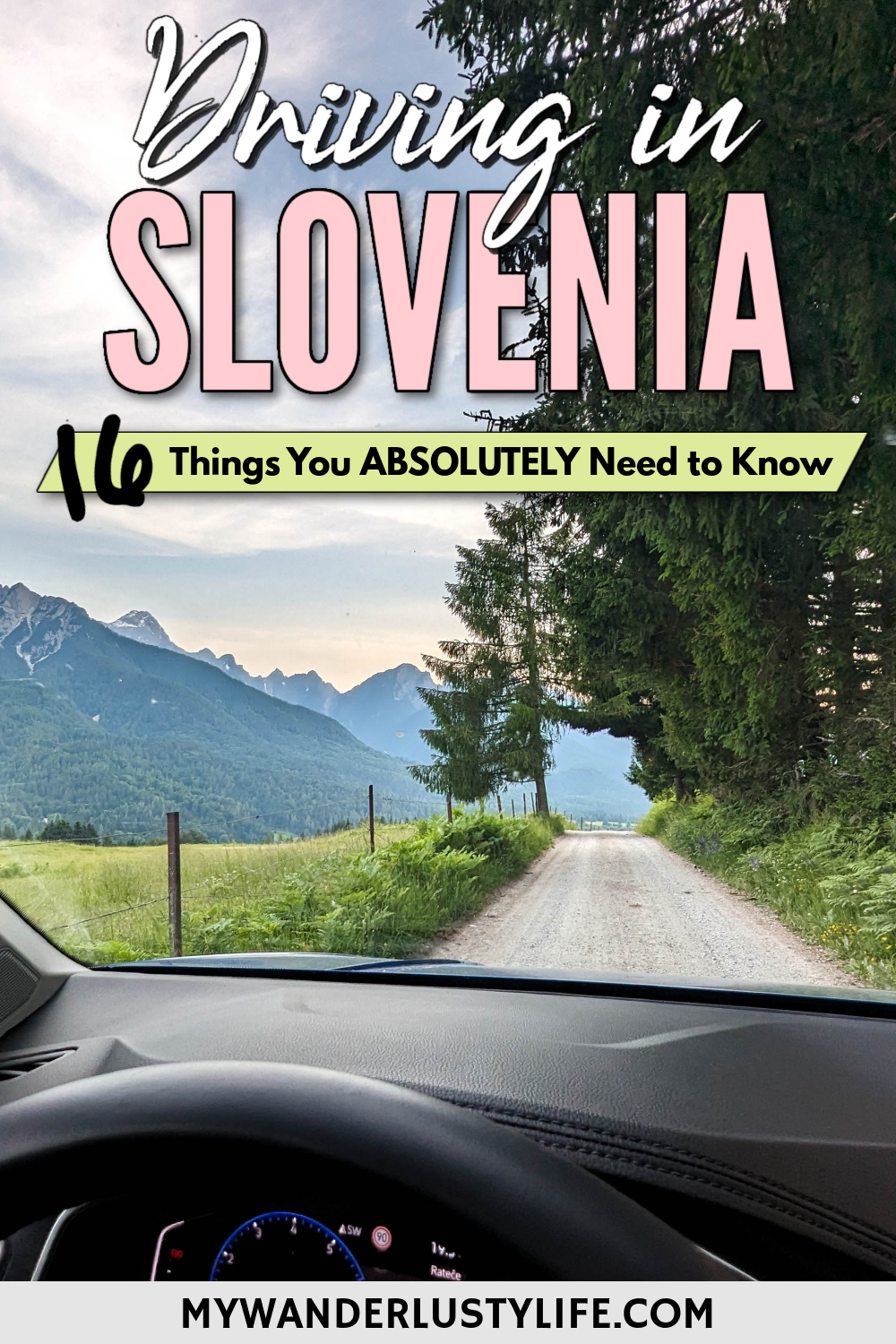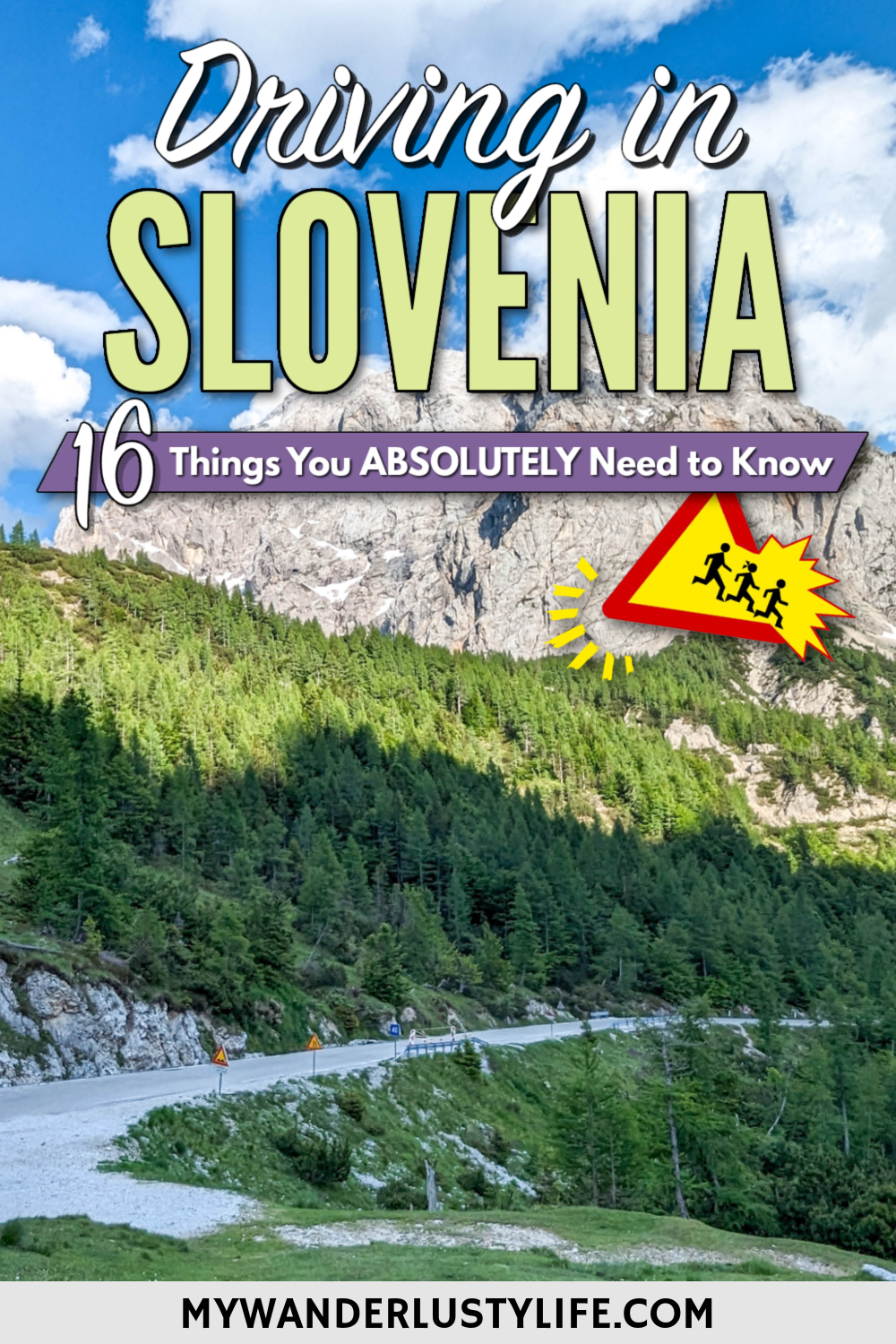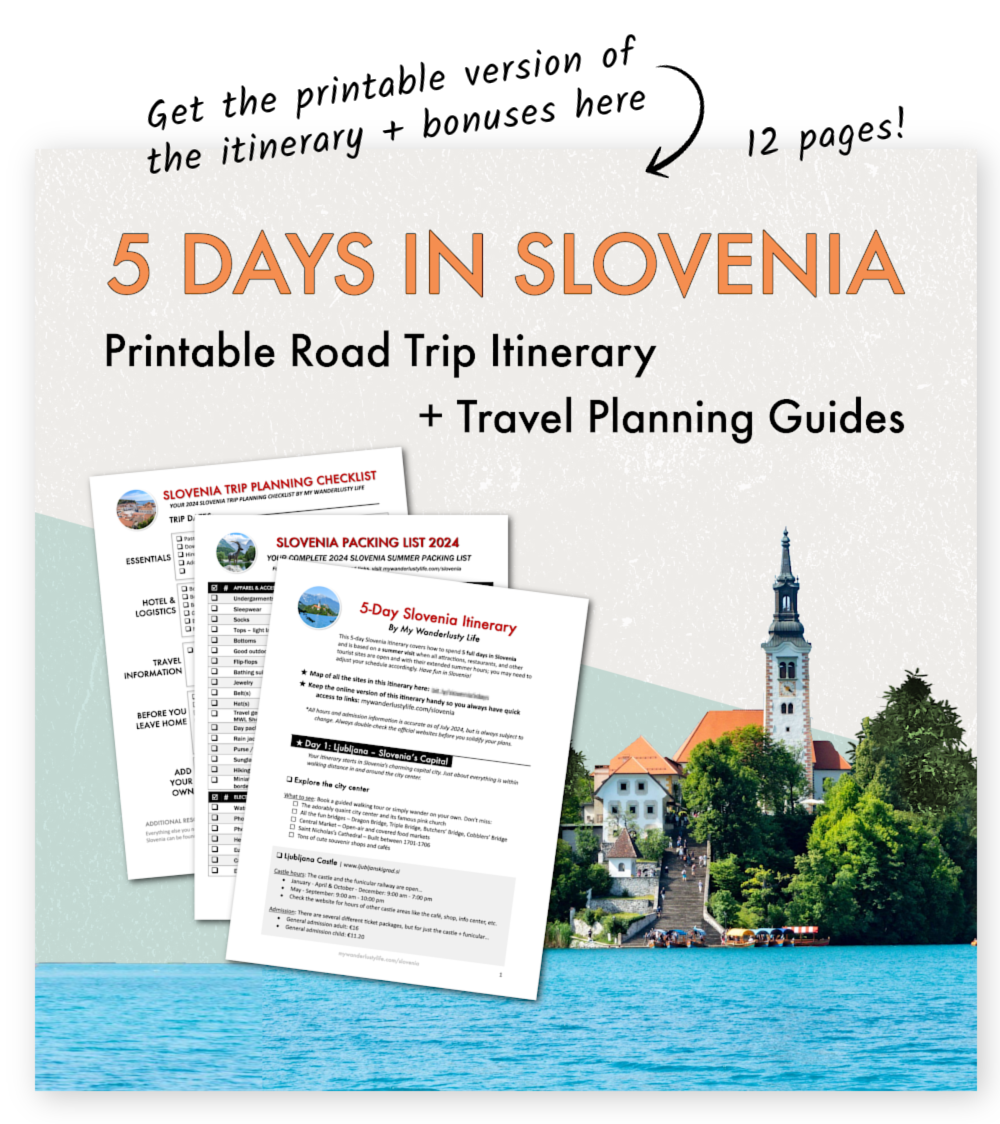If you want to visit all the most beautiful parts of this country, driving in Slovenia is something you’ll have to prepare for. Slovenia is small, but the only reliable way to get around to its many different areas is going to be by car. Luckily, driving in Slovenia is pretty easy and straightforward, but there are some super important things you should know before you go!
This post covers some basic information for driving in Slovenia and my own personal observations and tips. It does not cover every single driving rule that exists here. It is your responsibility to research international driving laws and your research should go beyond this blog post. Don’t come crying to me when they pull you over because you forgot to convert to kilometers or that you drive on the right side of the road here.
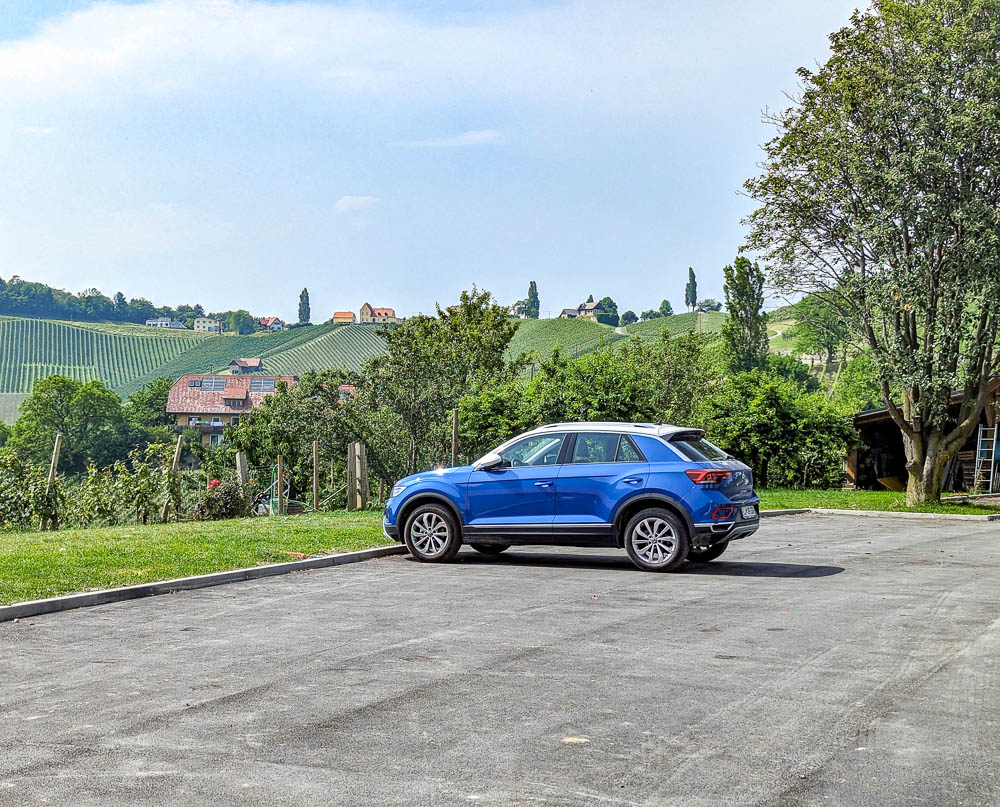
1. Yes, you need a car in Slovenia
The most important thing to know about visiting Slovenia is that you’ll definitely need your own rental car. There are so many worthwhile spots to visit here and most of them are outside the zones of reliable public transportation. (But that’s what keeps them so lovely!)
In Ljubljana, you’ll be able to get around quickly on foot or by using the easy local bus system. For everywhere else on your Slovenia itinerary, you better rent a car.
When I rode tripped around Slovenia in June 2023, I booked my rental car through rentalcars.com and ended up having the best rental experience. Like literally, the most pleasant rental car experience of my life. Check out the best rental car deals in Slovenia here and let’s hit the road!
Where should you go in Slovenia? Check out my 3-day itinerary here and my 5-day itinerary here for some inspiration!
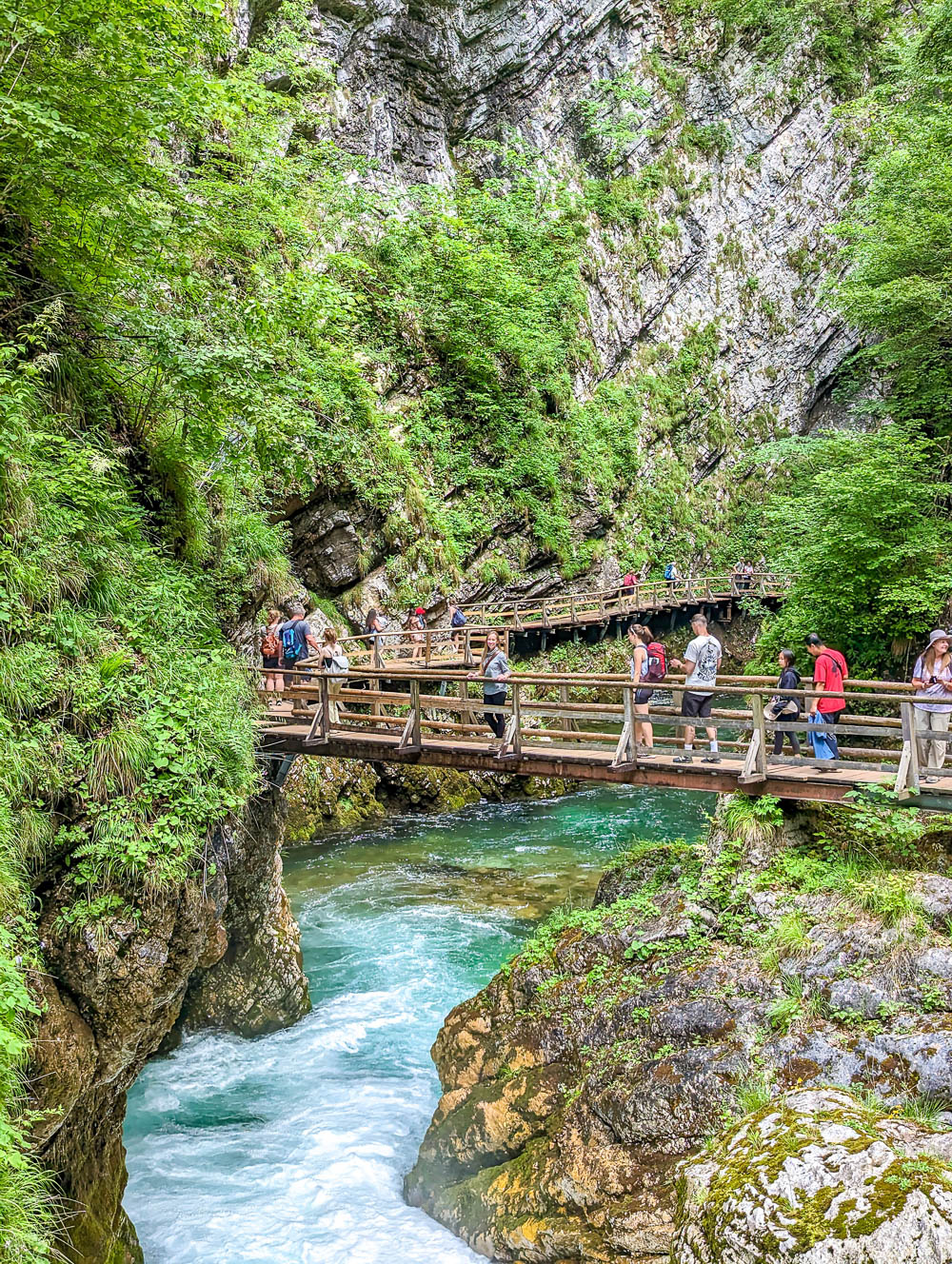
2. Get your international driver’s license
I had been driving all over Europe for over a decade and not once had anyone ever asked me for an international driver’s license. Until 2023 when I was asked for it in Naples, Italy. Then in 2024 when I rented a car to drive around Normandy. And then again a month later for driving around Poland. However, there are some countries that mandate you have one if you want to drive there. Slovenia is one of those countries.
So, I went to AAA and got my “international driver’s permit.” It took about half an hour, cost just $20, and is good for a year. Really, it’s just a document you have to pay for, which is silly. There aren’t any tests or anything, it’s just bureaucracy.
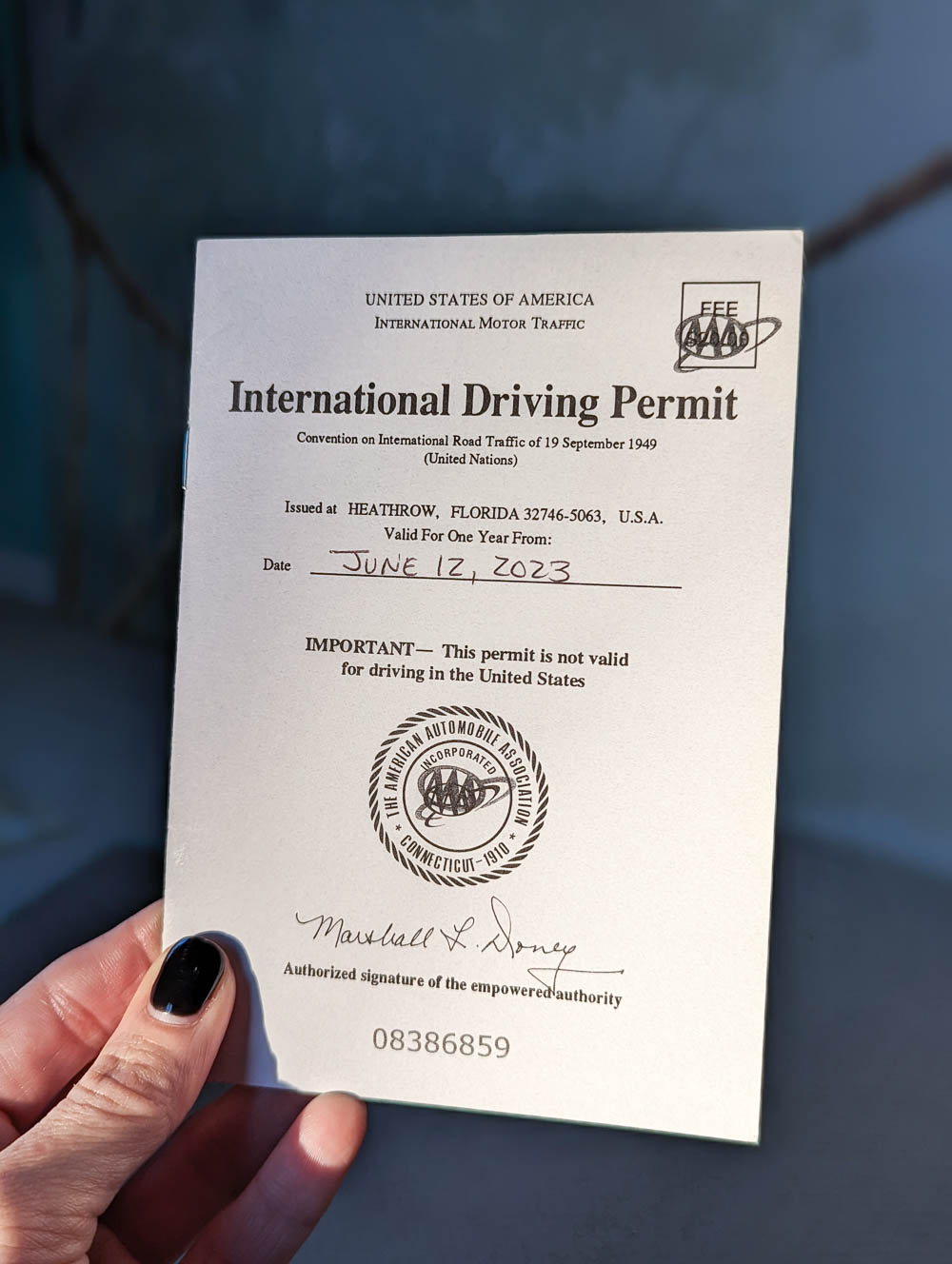
The rental car company never asked to see it and it has otherwise just gotten comfy in my carry-on. But, there could be an issue if you, say, were driving in Slovenia and got pulled over or were involved in some kind of vehicular accident and didn’t have it.
It’s an extra thing you have to deal with when preparing for your trip, but not having it could potentially cost you some fees if someone were to ever ask for it. So, just go ahead and get it to be safe.
AAA is the only provider of international driver’s permits authorized by the U.S. Department of State. Get more info on obtaining yours here.
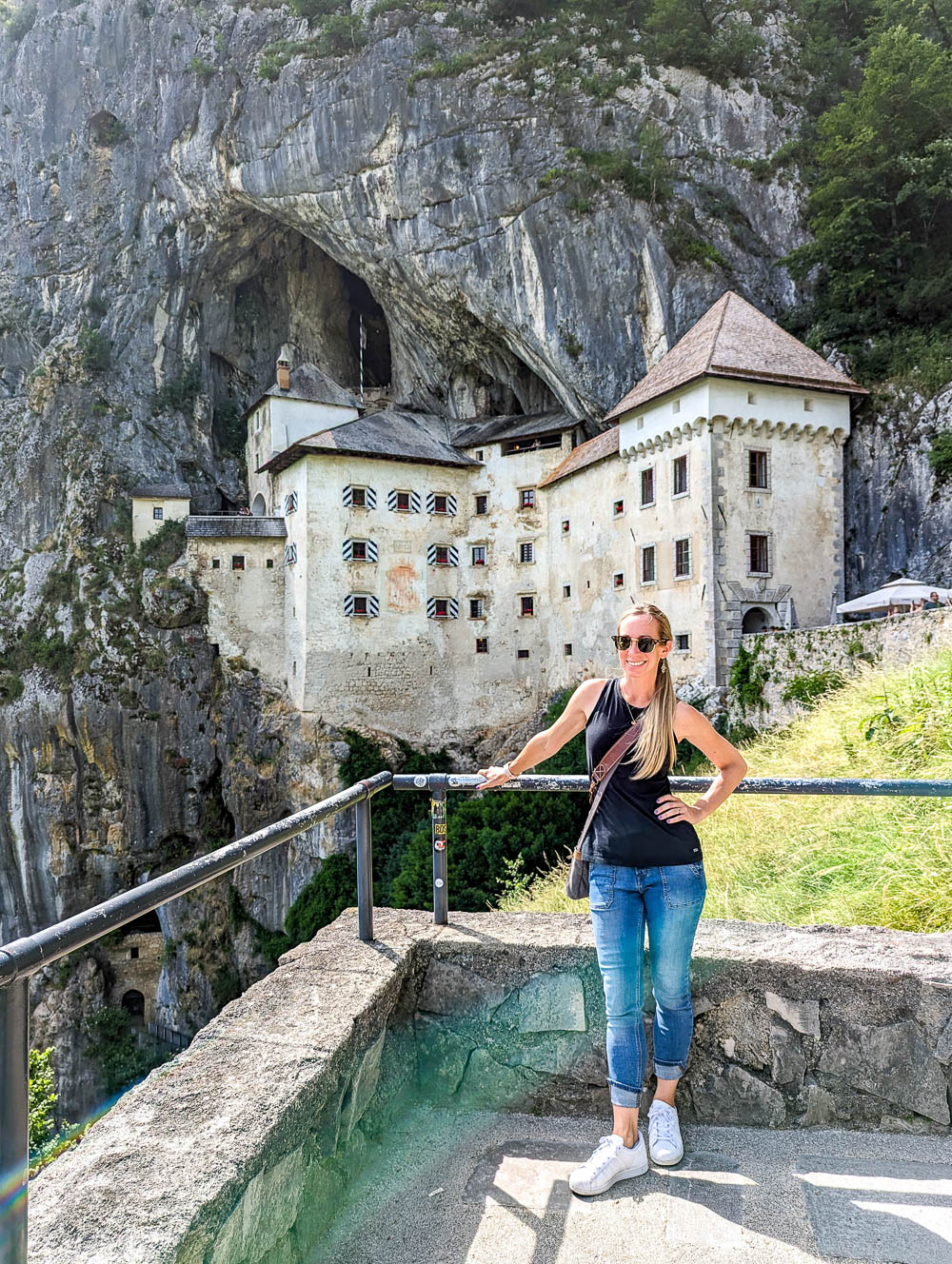
3. Driving in Slovenia requires a vignette
For driving in Slovenia, all cars must display a “vignette” – a special sticker that gives you permission to drive on Slovenia’s roads. Think of it as proof that you’ve paid a toll. (You pay one price for the vignette which basically covers all your “tolls” for the whole week/month/6 months/year, depending on which version you buy.) Again, more tedious formalities, but it is what it is.
If you rent your car in Slovenia, it should automatically come with the vignette. (But definitely confirm this before you leave the rental office.) The only time you really need to think about this is if you rent your car in another country like Italy or Germany and continue your road trip into Slovenia with the same car.
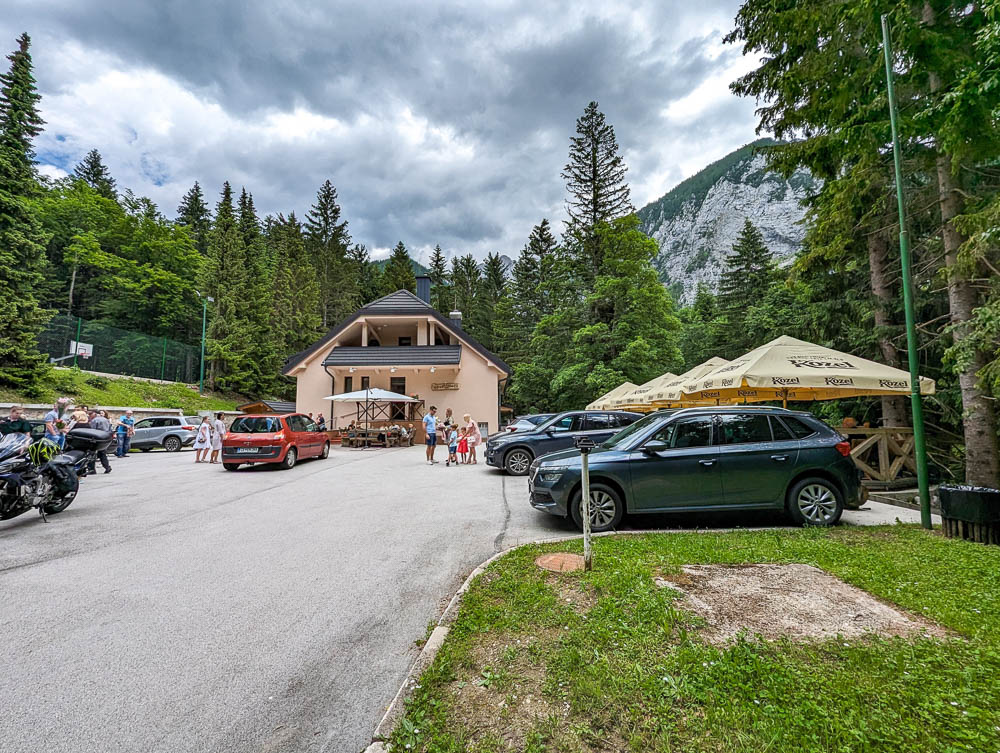
If you rent your car from a country outside Slovenia and plan on driving inside Slovenia at some point, you must pick up a vignette before you hit the Slovenian highway. You can get the Slovenia vignette two ways:
- In person at any of these authorized dealers in Slovenia, Austria, Germany, Italy, Croatia, Czech Republic, Hungary, Luxembourg, Poland, or Slovakia (mostly gas stations)
- Online, any time. This page is the only official dealer of Slovenia vignettes. Obviously, it makes more sense to just buy it online so you already have it.
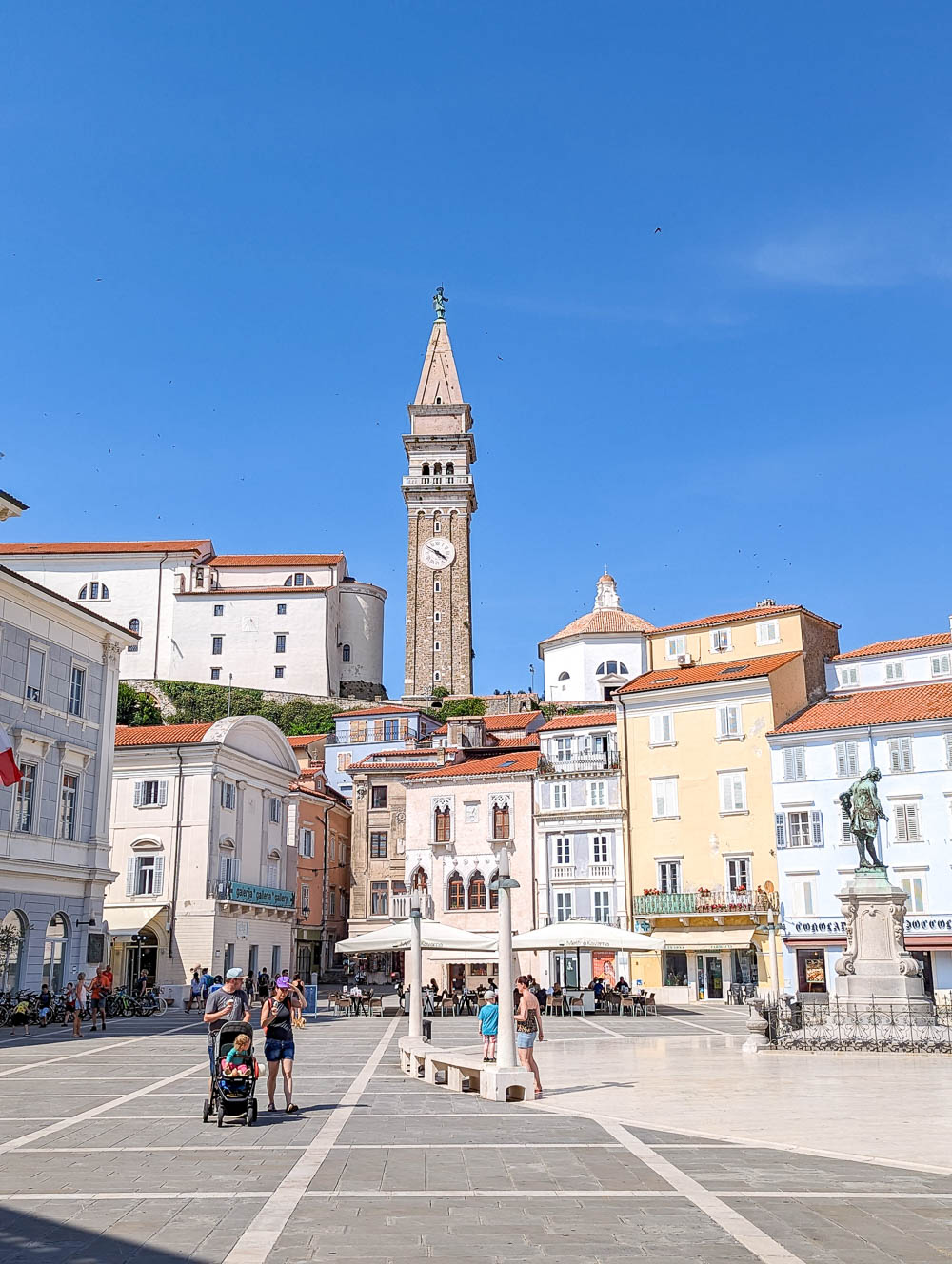
4. Another time you might need a vignette
Besides Slovenia, there are a handful of other countries in the area that also mandate having a vignette on your car. Take note if you plan to drive from Slovenia into: Austria, Slovakia, Czech Republic, Bulgaria, Hungary, Romania, or a few others. (Definitely cross-reference your road trip itinerary with countries that require vignettes.)
My road trip around Slovenia did actually take me into Austria, so I let the woman at the rental car desk know. She made sure that my rental also came with the Austria vignette so I wouldn’t have to deal with any nonsense once I got there. (Even though I did anyway; see #5.)
The main thing to remember here is to always run these scenarios by the person at the rental car office so they can direct you to the best way to go about things or simply provide you with the necessary tags. We all know they love the up-sell!
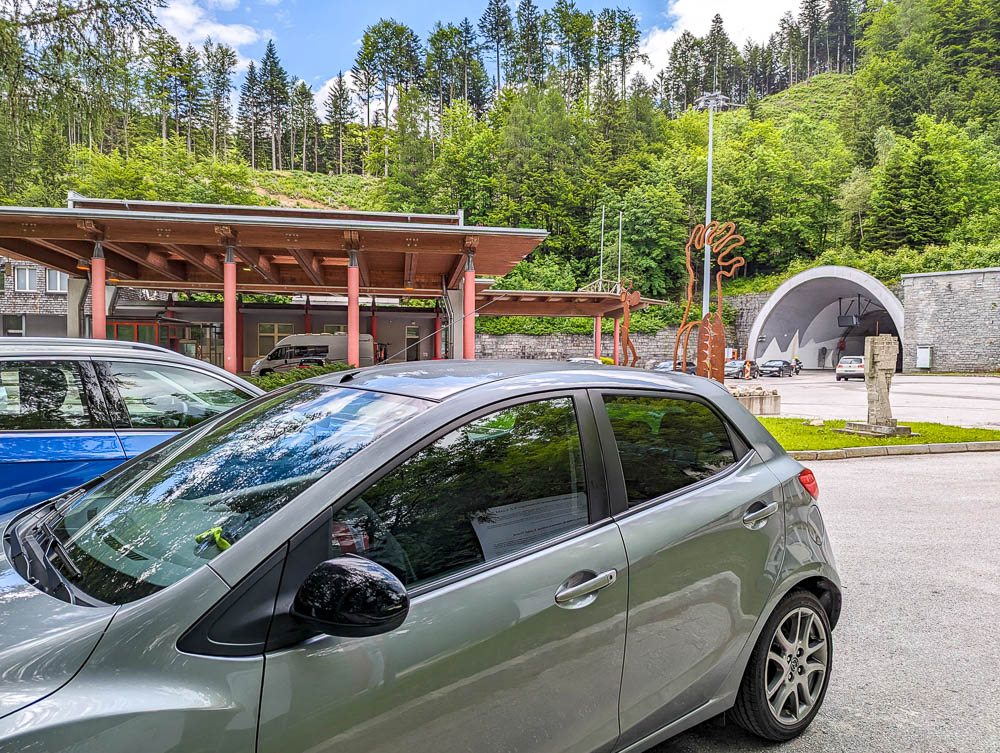
5. Keep your passport handy
One more thing about driving in Slovenia as it relates to Austria… if you do plan to or think you might cross over the border from Slovenia to Austria (or Hungary, or Croatia), be sure to keep your passport handy.
Yes, both Slovenia and Austria are members of the Schengen area which therefore should guarantee you border-free movement between countries. However, the Slovenia/Austria case isn’t as clear cut.
Thinking we could just drive from one country to another without having to stop at a border crossing, my friend Amanda and I didn’t even think about having our passports ready. Until we got through the tunnel and there was a super cranky Austrian border guard and a whole border crossing station to go through.
He (quite angrily) demanded our passports which we had to fish out of the bags in our trunk. Ultimately, everything went fine and we were able to go about our merry way, but the guy was super rude and kind of intimidating about the whole issue.
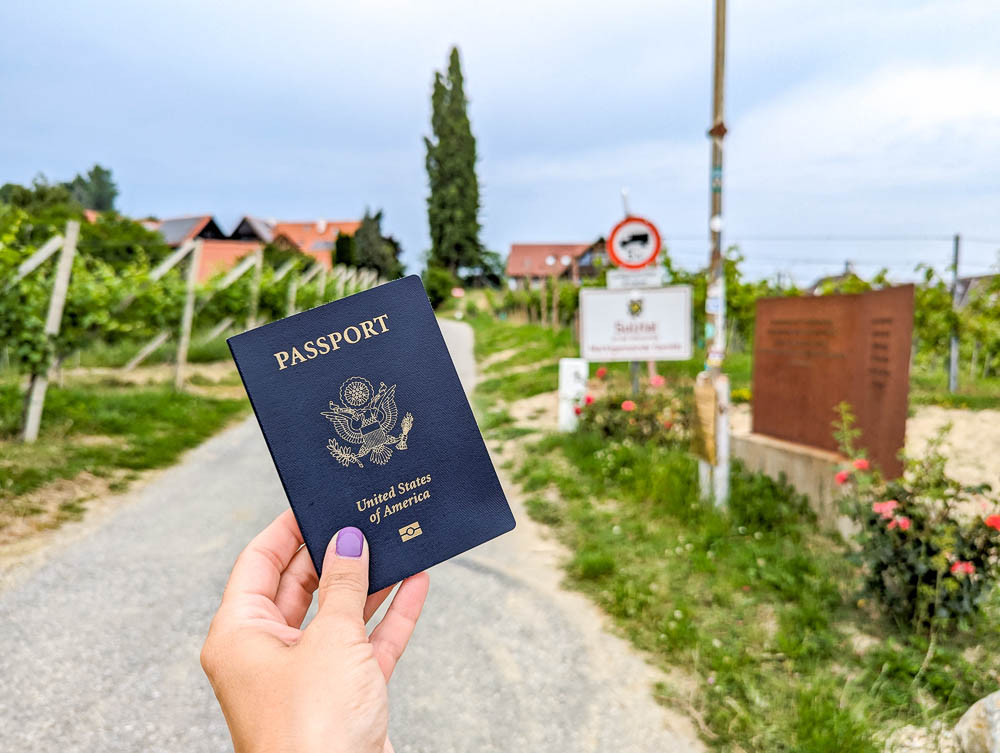
Schengen drama
Confused by the whole thing, I did some research into this and, apparently, Austria has been using the “serious threat to public order” excuse for continuing to enforce border control between the two countries since about 2015. It’s a whole thing; you can read about it here.
Similarly though, Slovenia began doing the same thing at its borders with Croatia and Hungary. Due to “increased threat,” you’ll need to show your passport when crossing between these countries until at least June 2025. (Though the date keeps extending.)
So even though you should be able to cross between these countries without issue (as I did in two other spots along the border), there may be an actual border crossing you’ll have to go through with a scrooge of a guard who’ll demand to see your documents. Always have your passport nearby just in case!
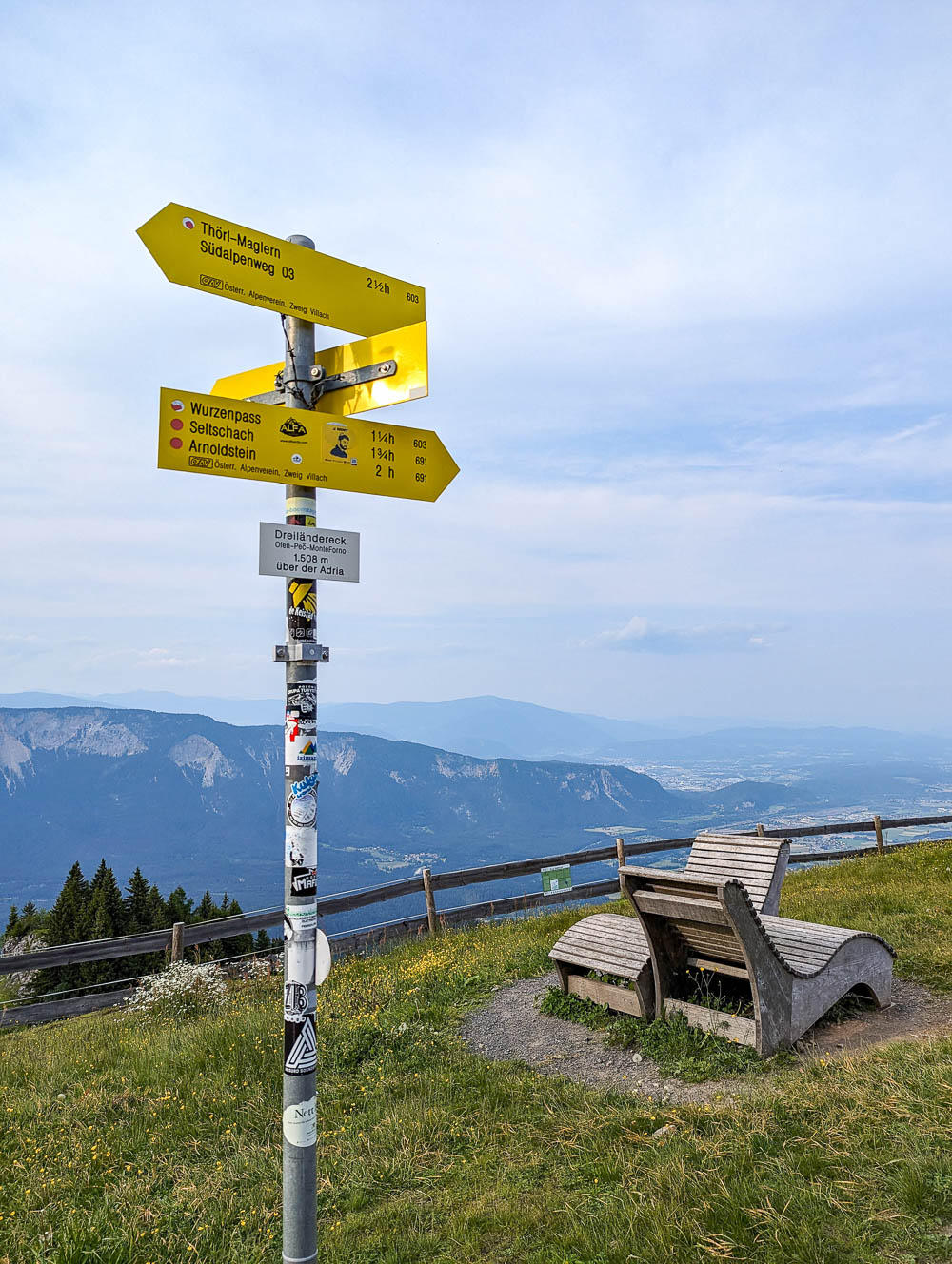
6. Slovenia’s speed limits are wacky
The entire time Amanda and I were road tripping around Slovenia we kept saying, “These speed limits make no sense!” And, yes, we already know they’re in kilometers, not miles. What I’m talking about is how Slovenia uses blanket speed limits for different scenarios.
Here in the U.S., every road has its own speed limit and it’s always posted, several times. We’re never like, “Oh I’m driving through a neighborhood, that automatically means the speed limit is XX.” Or “Since I’m on a country road, I already know I’m supposed to drive XX mph.” No; that’s not how it works. But in Slovenia, that is how it works.
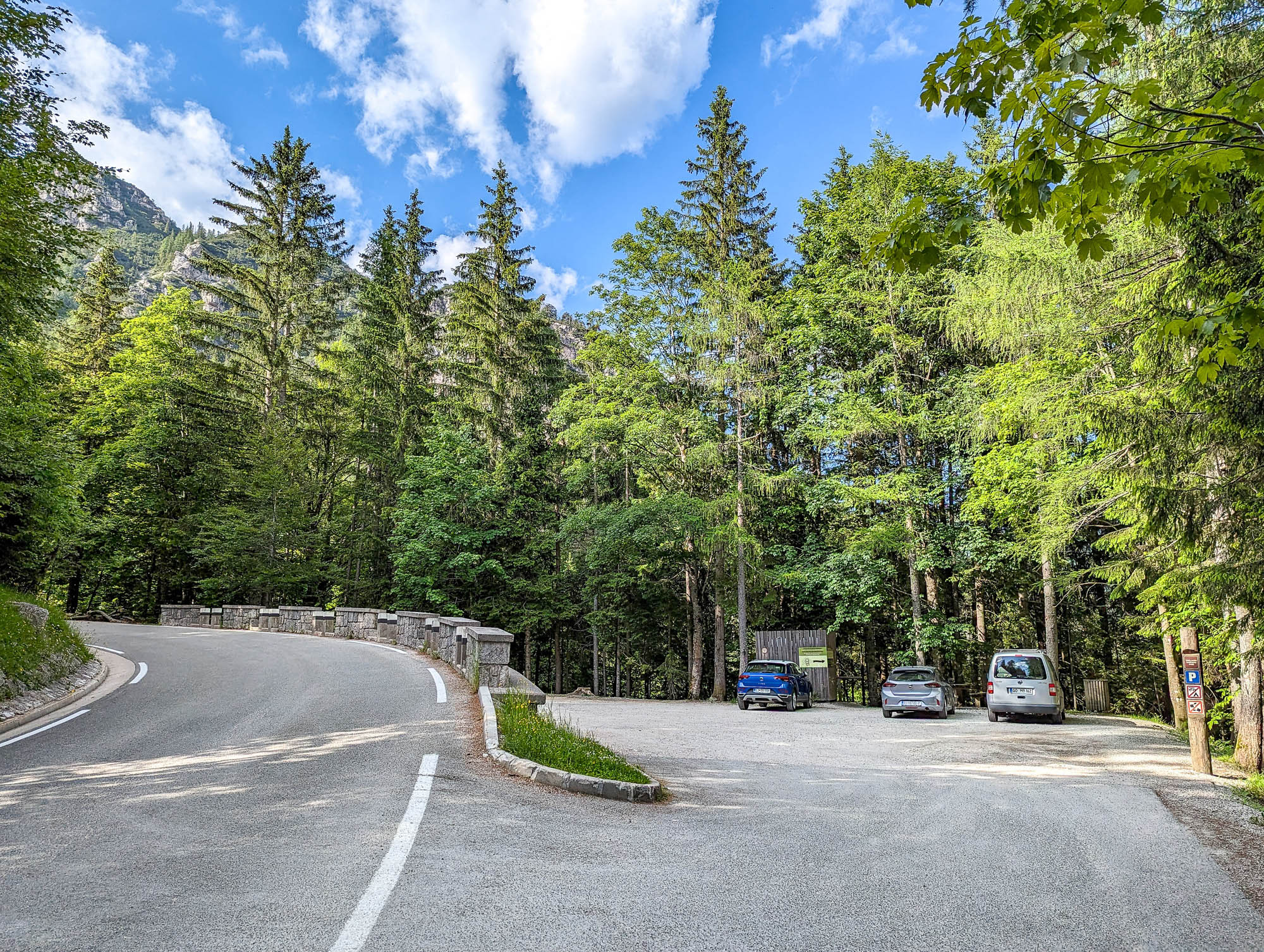
Slovenia speed limits
In many places, there are posted speed limits in Slovenia. However, they’re often just a reminder of the blanket speed limits you’re supposed to follow. They are:
- In residential areas: 50 kph (30 mph)
- On “regional roads”: 90 kph (56 mph) This basically means any road not in a “built-up” area / country roads, etc.
- On “express roads”: 110 kph (68 mph) Divided highways with two lanes going each way
- On “motorways”: 130 kph (80 mph) Big ol’ interstate systems
Sure, most of that makes sense. BUT, the thing about Slovenia is… those “regional roads” are most often windy, steep mountain roads, on the edges of cliffs, with zero visibility around the corners. And the posted speed limit here is literally the equivalent of 60 mph.
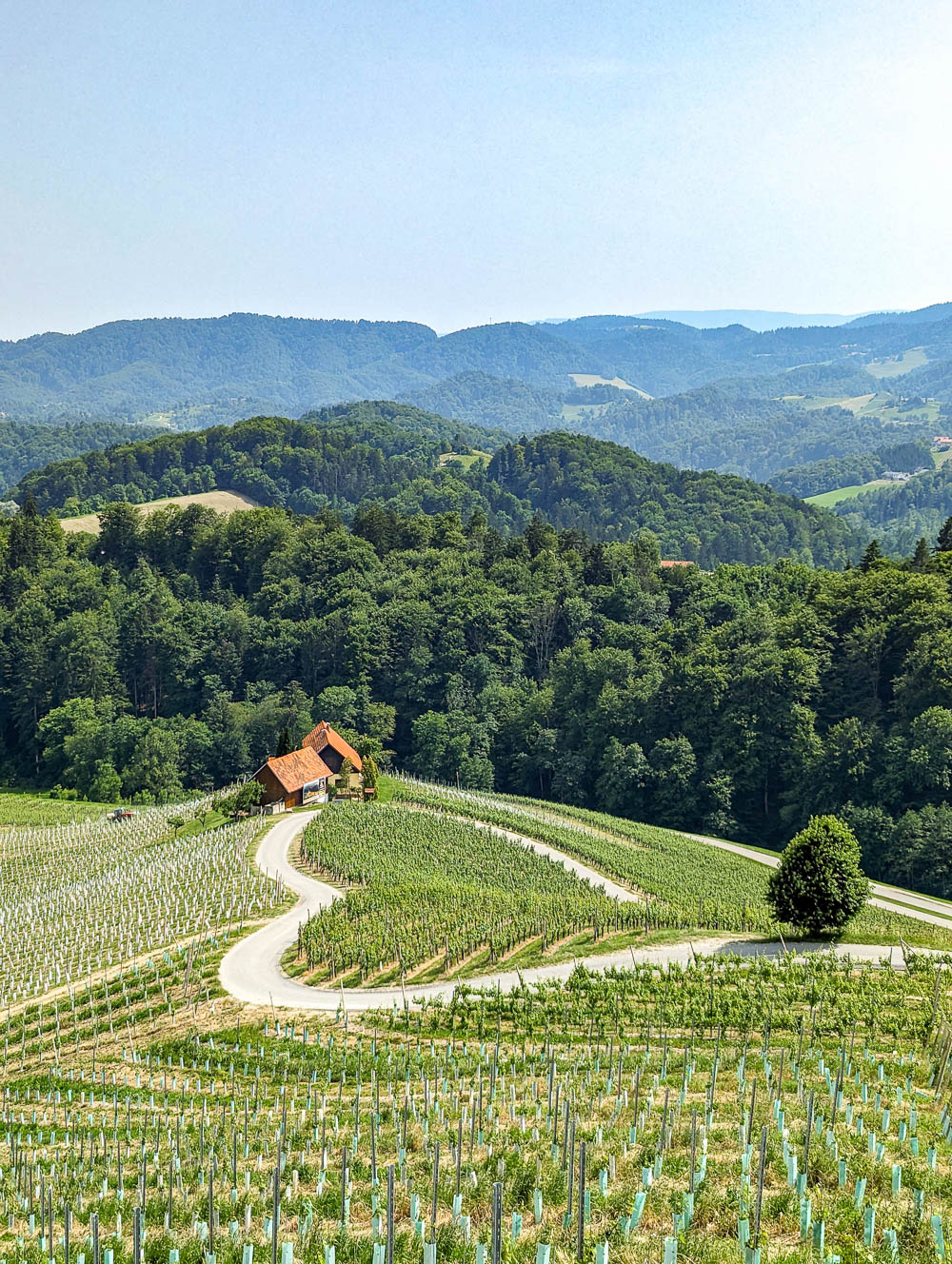
Before I’d researched this and found 90 kph is just the blanket speed limit for any road that’s not in a “built up” area, I was seriously confused. They want me to go how fast around these mountainous curves???
On the flip side, there were plenty of times when we were on flat, open roads and the speed limit was 50kph (30mph) because there was a farmhouse or two nearby. So they want me to go 30mph on this flat open road, but 60mph on the mountain edge with blind curves???
Beyond this, there were many times when there just wasn’t a speed limit posted at all because… common knowledge, apparently. Only I don’t live there. My GPS app and my rental car actually did show the speed limit during those times, and basically the default (whenever there wasn’t a speed actually posted) was 90 kph! That seems insane to me.
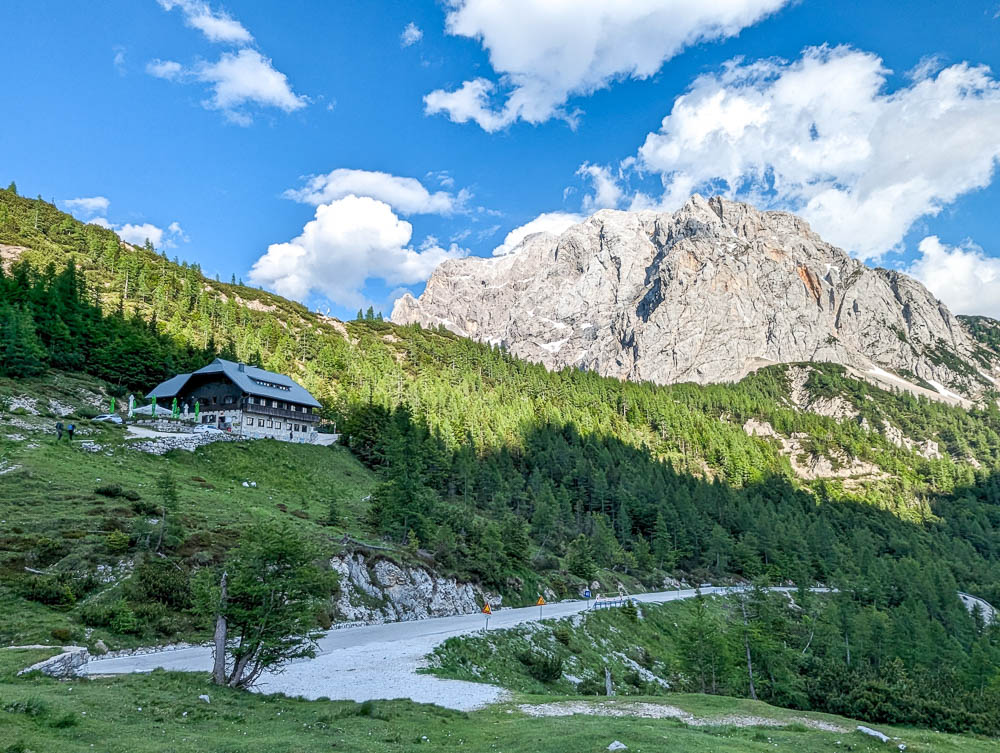
Just be safe
Long story short, go as fast or as slow as you feel comfortable or that you deem safe. I get that they try to keep things simple by implementing these blanket speed limits, but driving in Slovenia isn’t so cut and dry.
After consulting my travel bible (aka, Culture Smart Slovenia), it says: When driving in Slovenia, expect “great velocity, and much risk taking, including drivers’ firm belief that they can see around corners and through hills.” OK so it’s not just me.
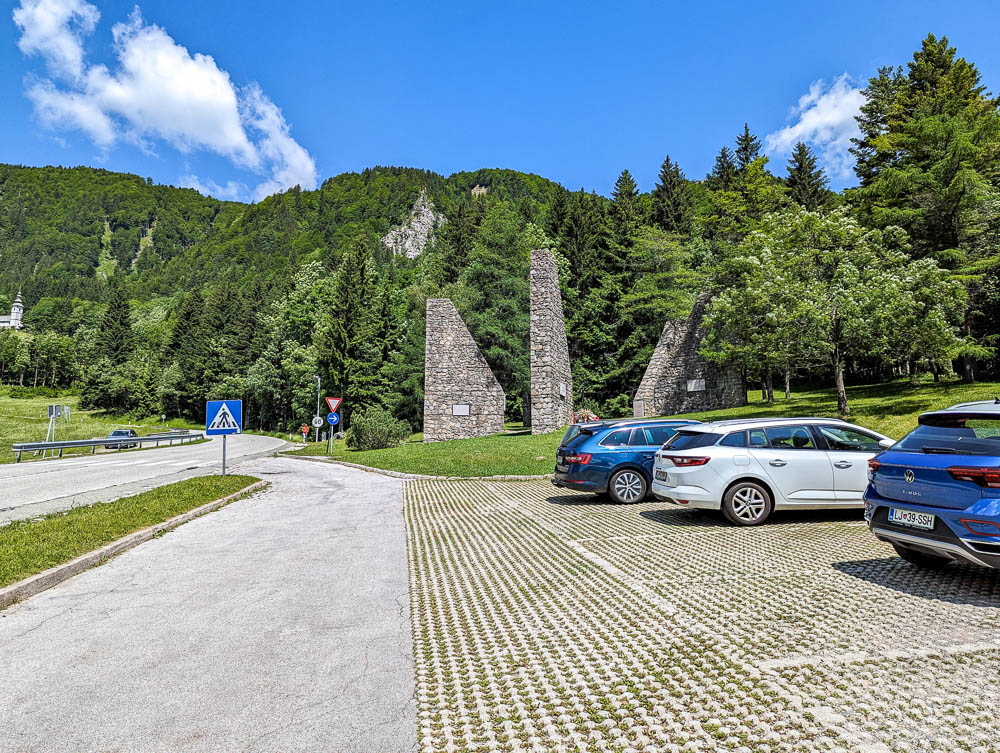
7. All the signs. So many signs.
Another thing you’ll quickly pick up on when driving in Slovenia is the excessive number of signs. Stop signs, directional signs, instructional signs, city signs, priority signs, ahhhh it definitely gets to be too much. The roadsides are just littered with signs—so many signs that not any one sign actually stands out.
Some of them are useful, of course, but some of them… I swear to god… are just signs for the sake of having signs. Like here’s this one 10-foot span of road that doesn’t have a sign so MUST PUT SIGN HERE.
If there’s a sign for like “no using your horn here,” there’s also a sign for “end of horn restriction.” Every time there’s a sign for something, there’s also a sign for the end of that something. There are six different kinds of signs for railroad crossings. SIX. There’s even one for “air traffic.”
I think my favorite is the sign for “priority road.” They have this sign all up and down the roads that have the right-of-way. All of them. But like, it’ll be on the main road where the only other roads are one-lane country roads or driveways. Is it not obvious to these people which road has the right-of-way? But also, this sign is at the intersections… where there are already stop lights telling you what to do. YOU DON’T NEED THESE SIGNS.
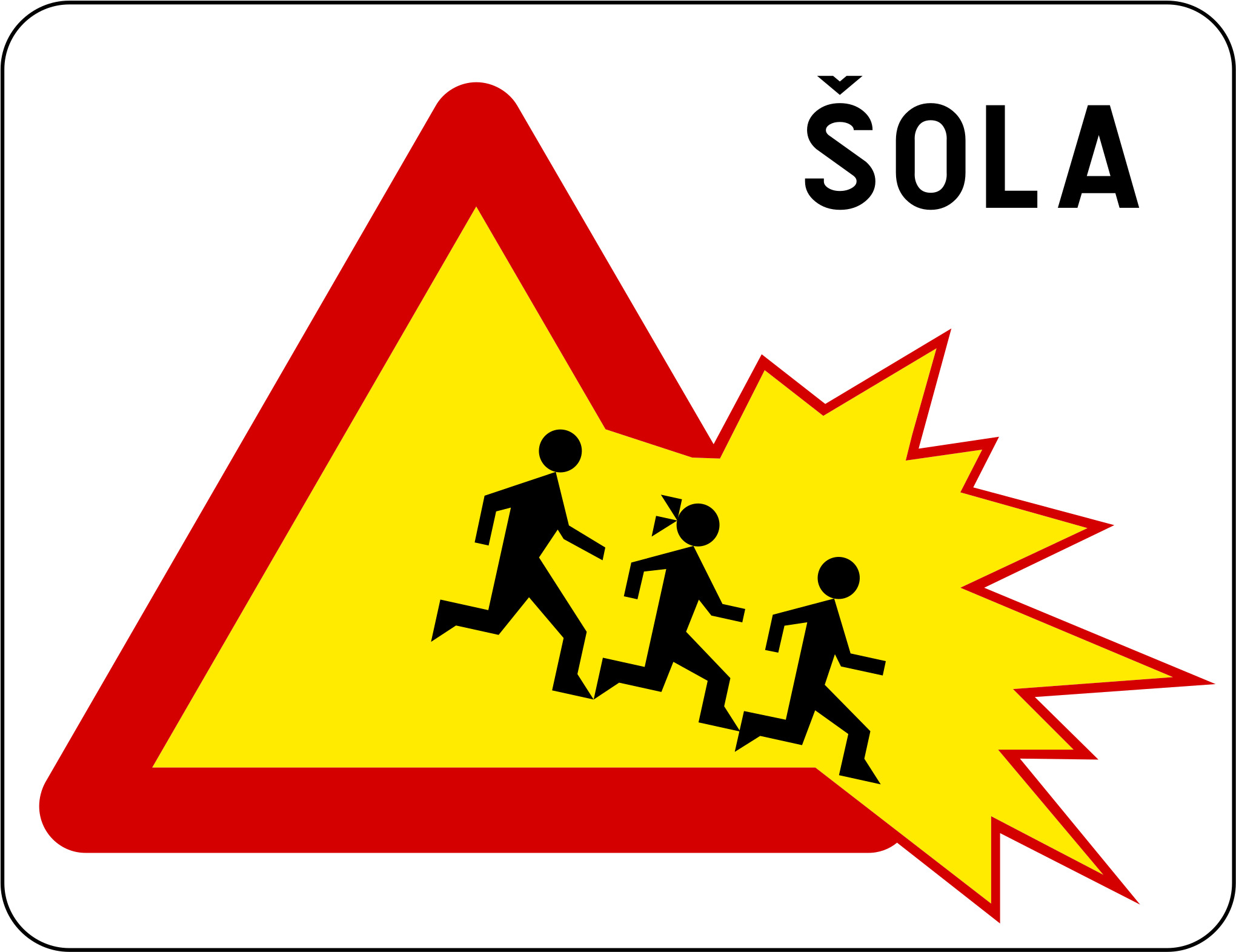
Nope, I take that back. My favorite is the sign for school zones which show the children straight-up exploding out into the street. Basically, throughout our entire Slovenia road trip we were just googling all the crazy signs we saw because, unlike the rest of Europe, the meanings of so many of them aren’t obvious.
Study your signs
This page has a list of (probably not) all the Slovenia road signs. Maybe just save it for when you’re driving in Slovenia and have many questions.
This one isn’t related to driving in Slovenia, but nothing, absolutely NOTHING, beats the sign we saw at our hotel’s pool. Next to the sign for “No shoes allowed” was a sign that said, in five languages: “Please read this sign.” I just can’t.
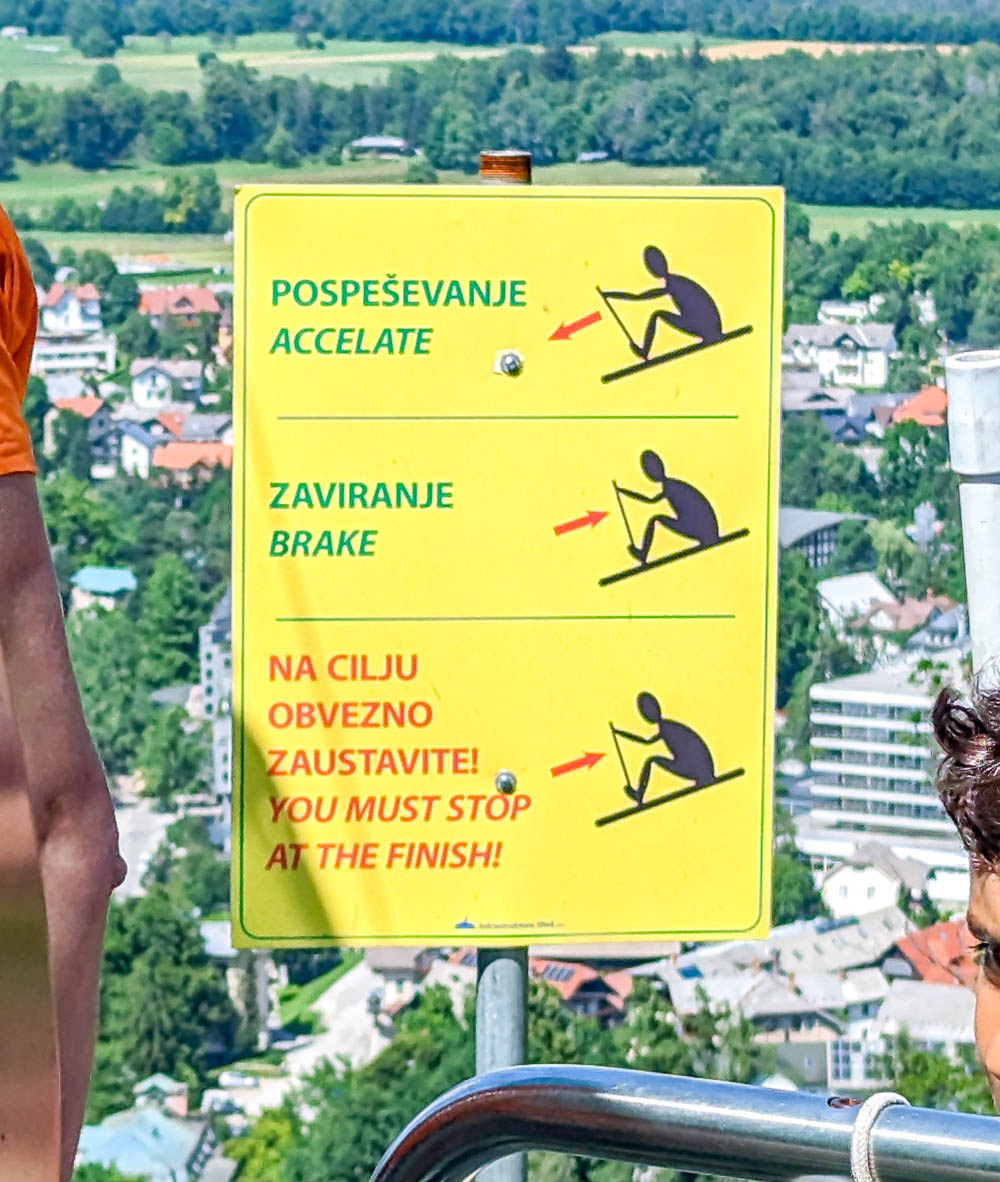
8. So many motorcycles, so many bicycles
I’m about as far removed from motorcycle culture as you can get, so the fact that Slovenia is apparently one of the most popular places to ride was total news to me.
That is, until I started driving in Slovenia – the number of motorcycles on the road here is shocking. Everywhere we went there were signs outside businesses saying, “Bikers welcome!” Everywhere. And there were bikers at all of these places! Big groups of them.
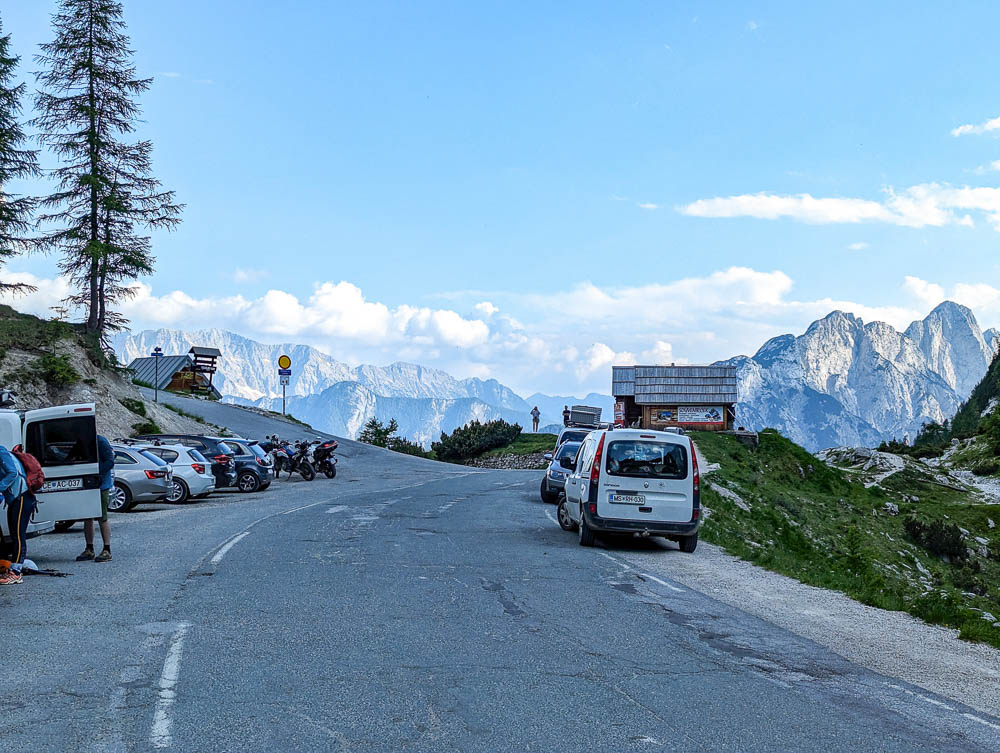
The same goes for regular ol’ analog bikes too. Every country and mountain road you drive on here is loaded with bicyclists. As Culture Smart Slovenia puts it: “Hilly Slovenia is the strong-legged cyclist’s dream.”
And y’all. These roads are damn near vertical in places! Amanda and I were constantly amazed watching these bikers (of all ages) using just their massive calf muscles to pedal themselves up the mountains. We generously doled out a “Hard pass!” or an “Absolutely not!” every time we passed one.
So if you’re looking to explore Slovenia on two wheels instead of four, you’re in luck—Bikers welcome! Otherwise, be super cautious about this while you’re driving in Slovenia—bikers of all kinds are everywhere.
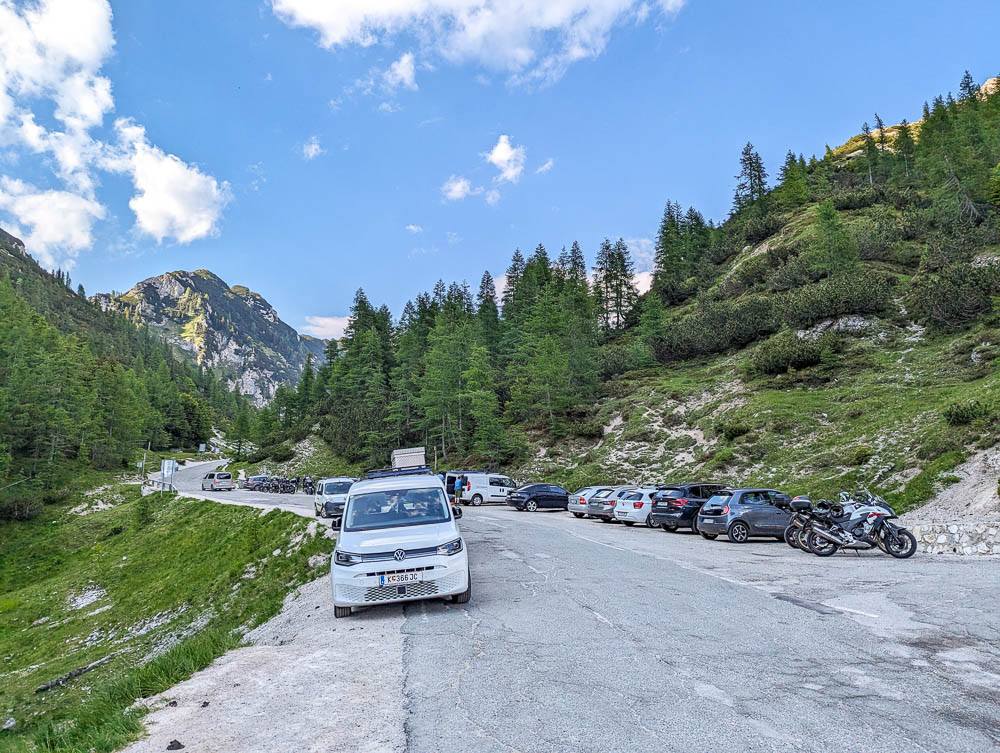
9. Don’t blindly trust Google Maps and Waze
I’m not going to go over my entire harrowing ordeal here of how both Google Maps and Waze led us astray in Slovenia. I relived the whole nightmare in my post on my worst travel moments of 2023 – so click on that if you want to read about it!
But I will just say in general that neither Google Maps nor Waze has a freaking clue what is going on in Slovenia. Besides the particular nightmare I just referenced (which has indeed traumatized me permanently), both of these GPS apps took us to wrong destinations almost 100% of the time. It was definitely more often than not.
Half the places we wanted to go weren’t even on the maps for some reason and other times they’d take us the most convoluted, nonsensical routes imaginable. They took us to places that were no longer open (and obviously hadn’t been in YEARS). They took us down roads that WERE NOT EVEN ROADS.
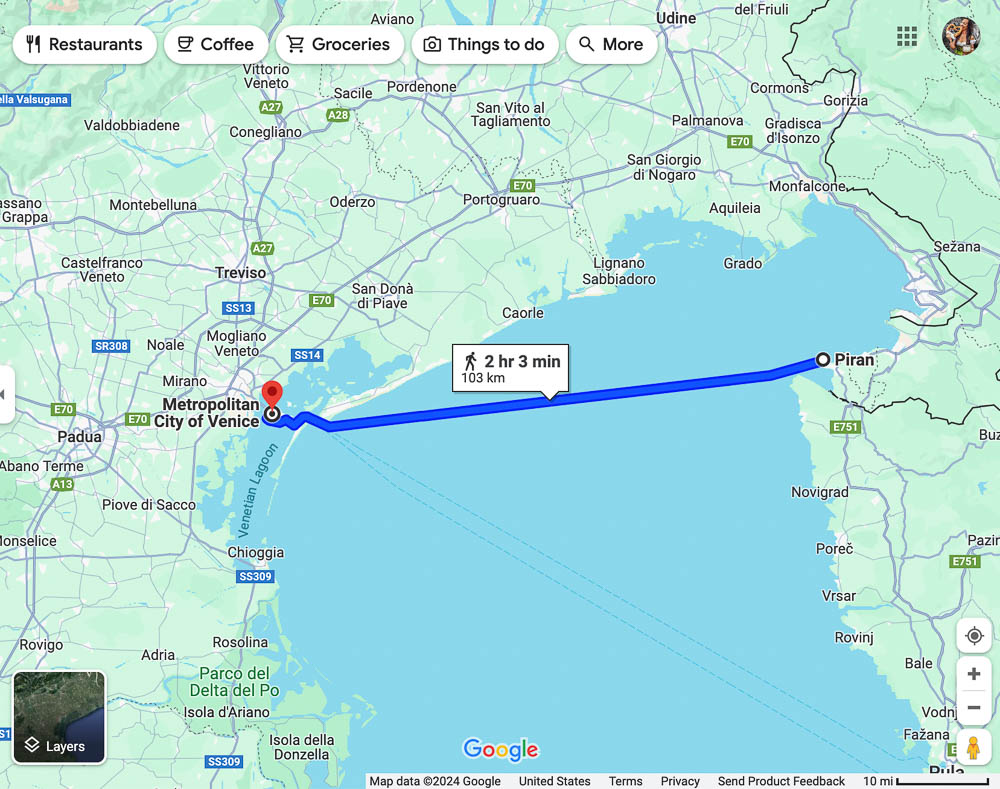
At one point, on our way to visit Ljubelj Concentration Camp, it took us down a road that—I kid you not—was probably the original road from the 1940s. Today, it’s merely a hint of a dirt and gravel walking path in SOMEONE’S BACK YARD. Thankfully, the man hardly looked up as we bobbled on past through his back yard while he worked out in his garden.
It’s different in Slovenia
I use these apps pretty much every time I get in my car, whether it’s here in the US or in Europe, and I almost never have an issue. I’ve never seen anything like Slovenia though where both apps just didn’t have a clue what was going on. They were just making up directions on the spot.
If you plan to use either of these apps while driving in Slovenia, PLEASE do yourself a favor and crosscheck the directions across a few different sources. Read the “How do you get here” information for whatever attraction or town you’re trying to visit. Do NOT just get in your car, put in a location, and hit the road. It will not end well for you.
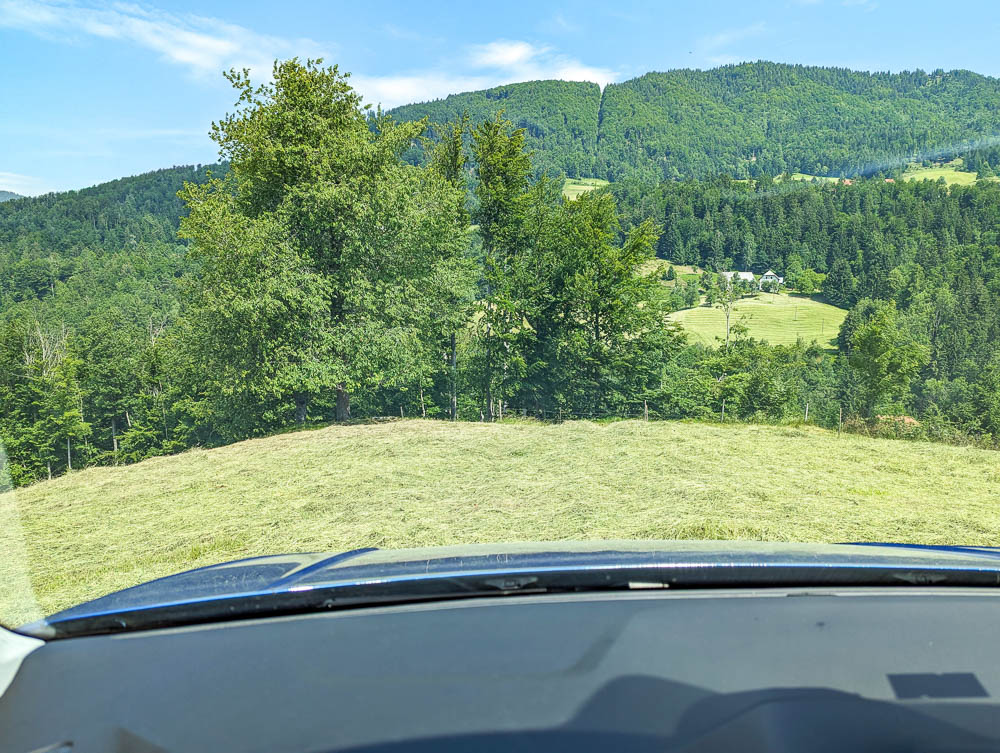
10. Get a 4WD vehicle for driving in Slovenia
If you read my Slovenia driving nightmare above, you already know why you should get a 4WD vehicle if you plan on driving in Slovenia.
Basically, the number of steep, mountainous, gravel and/or dirt roads you’ll drive on here is going to be excessive. Several of the places we visited (and tried to visit) were up or down these kinds of roads. Had we had a 4WD vehicle, we probably wouldn’t have gotten trapped like we did on that road-that-wasn’t-a-road.
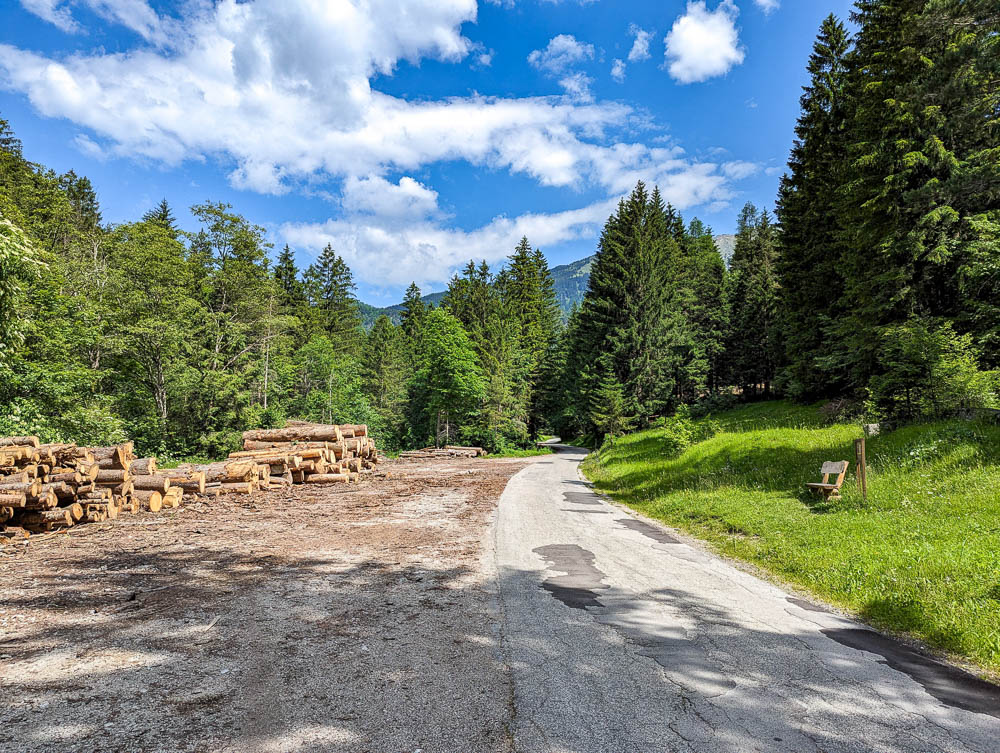
It’s kind of shocking to me they don’t offer exclusively 4WD vehicles in Slovenia. Seriously, the driving scenarios that would warrant such a vehicle are plentiful enough that you’ll be glad you have one. I think many people don’t look past Ljubljana and Lake Bled when renting a car, forgetting that Slovenia is largely an Alpine country with plenty of off-road opportunities.
(I’m renting only 4WD vehicles from now on, regardless of my destination. Ashley is not playing around anymore.)
Rent your 4WD vehicle for Slovenia here.
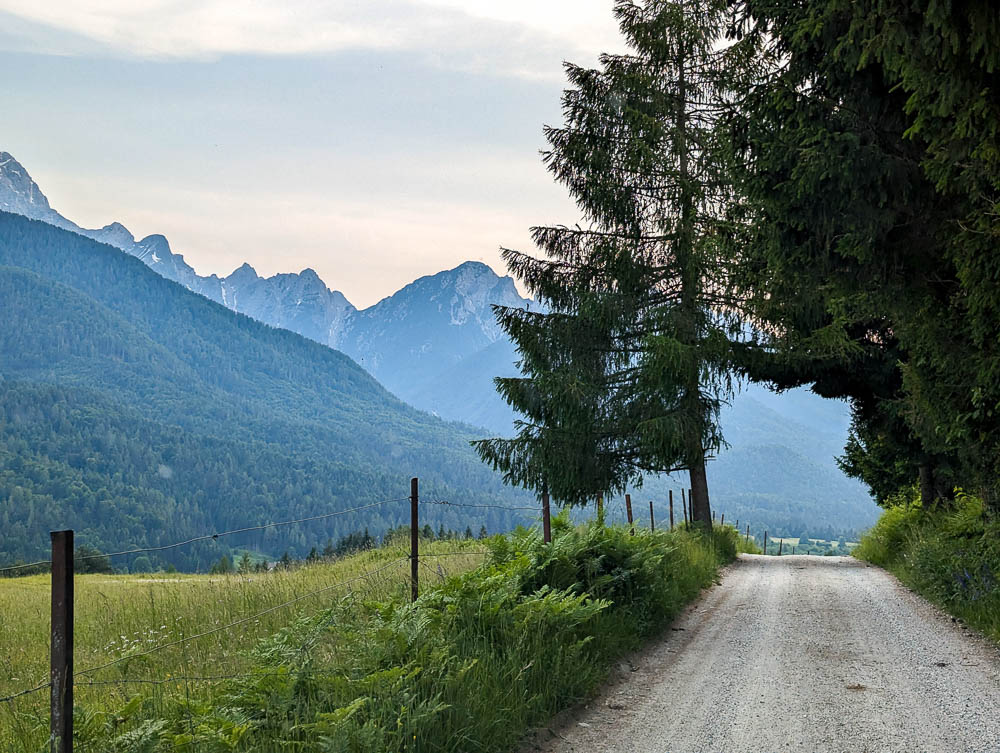
11. Slovenia is smaller than you think
One of the best things to know about driving in Slovenia is that the country is smaller than you might think. When Amanda and I were planning our trip, there were some destinations we wanted to visit that looked pretty far apart on the map. But they turned out to only be about an hour apart. And this happened repeatedly!
When we wanted to head for Maribor (for some awesome wine tastings), we groaned at having to drive “all the way across the country.” But really, it was only 3 hours! And after two weeks of driving in Slovenia, that was the longest span we had behind the wheel. (It really is the best country for a road trip!) So don’t be afraid to plan a lot and see as much of this awesome country as you can.
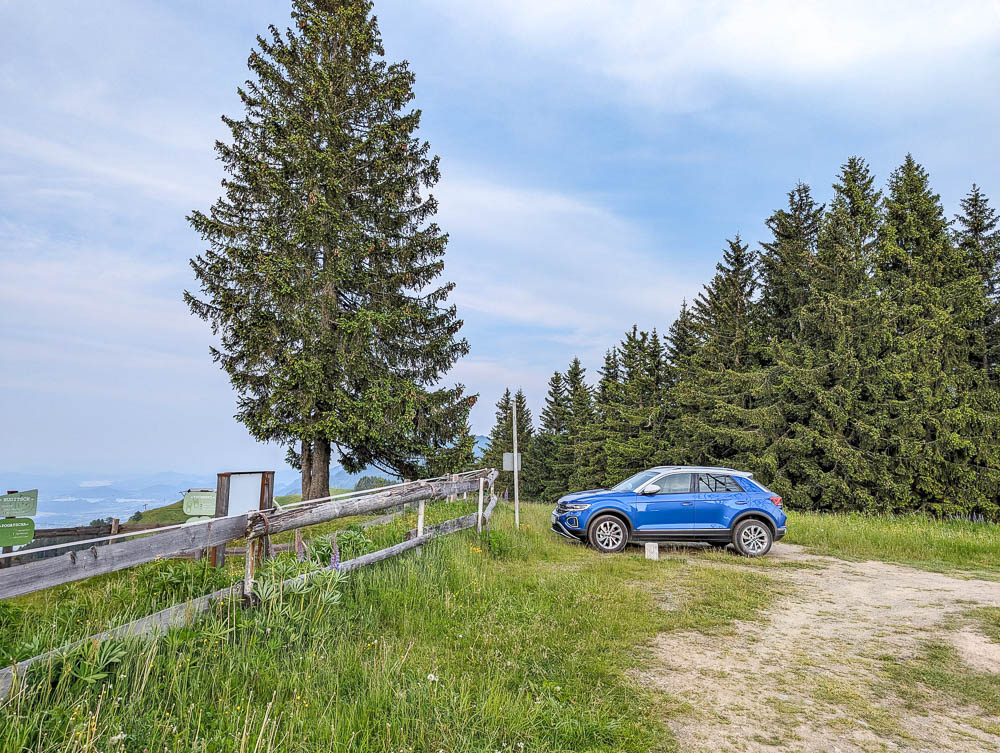
Did you know Slovenia is the world capital of beekeeping? Check out all the amazing bee- and honey-related things you can do here in my post on apitourism in Slovenia.
12. Double your drive times
That being said, there are a few times when you need to double your drive times. In the case of driving across Slovenia or any time you’re on the highway, you needn’t worry. But when you’re headed to some of the more remote destinations like Triglav National Park or the caves, just go ahead and plan for it to take longer than anticipated.
The reason for this is multi-fold. Firstly, Google Maps probably estimates your drive time using “Slovenian speed limits” which we’ve already established is just not happening.
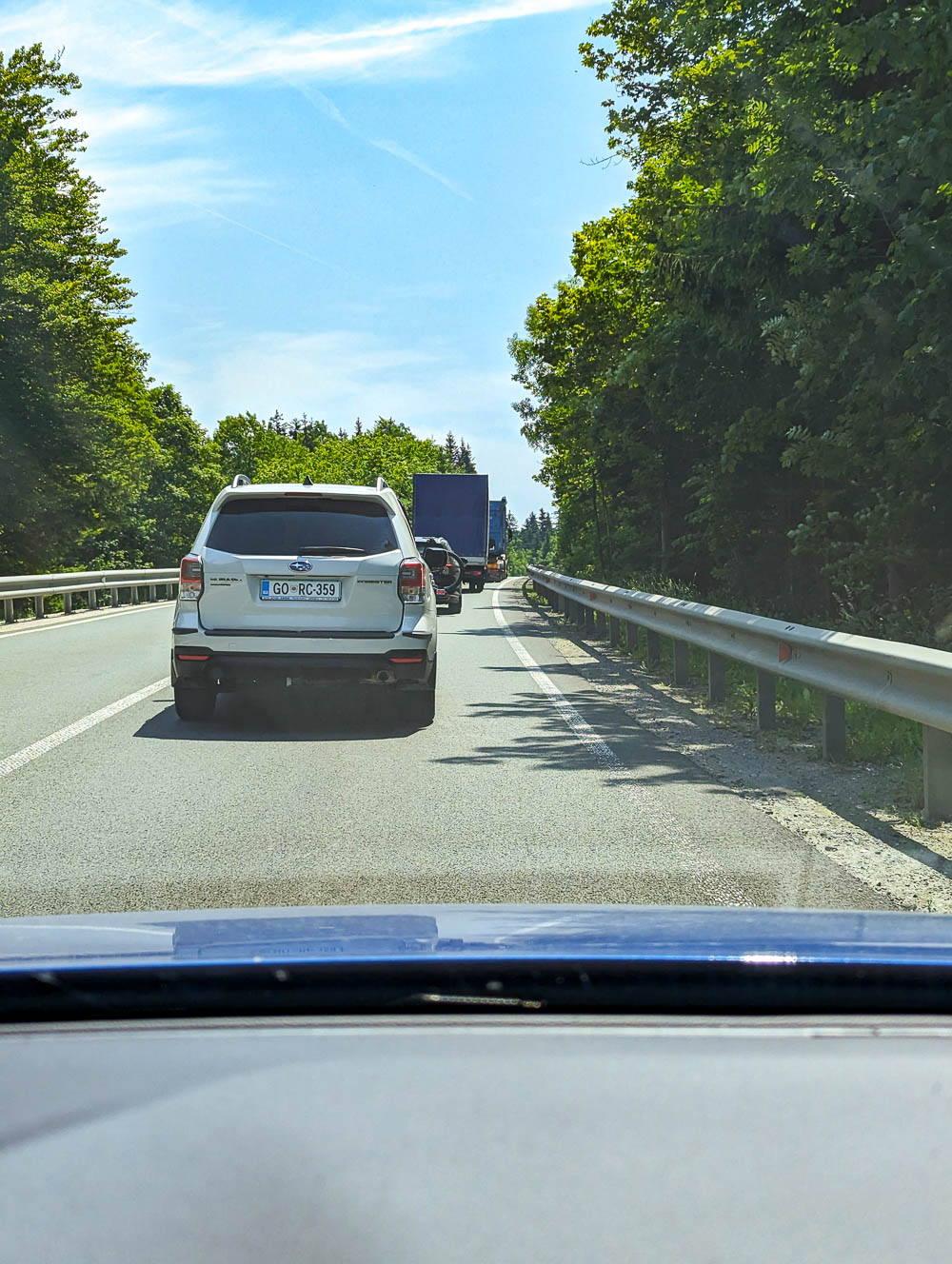
Secondly, the roads. Again, you’ll be driving up gravel roads and around windy mountain paths which is going to greatly slow you down. Thirdly, on these roads, you will constantly get stuck behind either ginormous tractors or bicyclists (with ginormous calves) that you can’t get around.
Our drive times often ended up being 50-100% longer than Google Maps estimated. (So again—moral of the story—don’t trust Google Maps in Slovenia.)
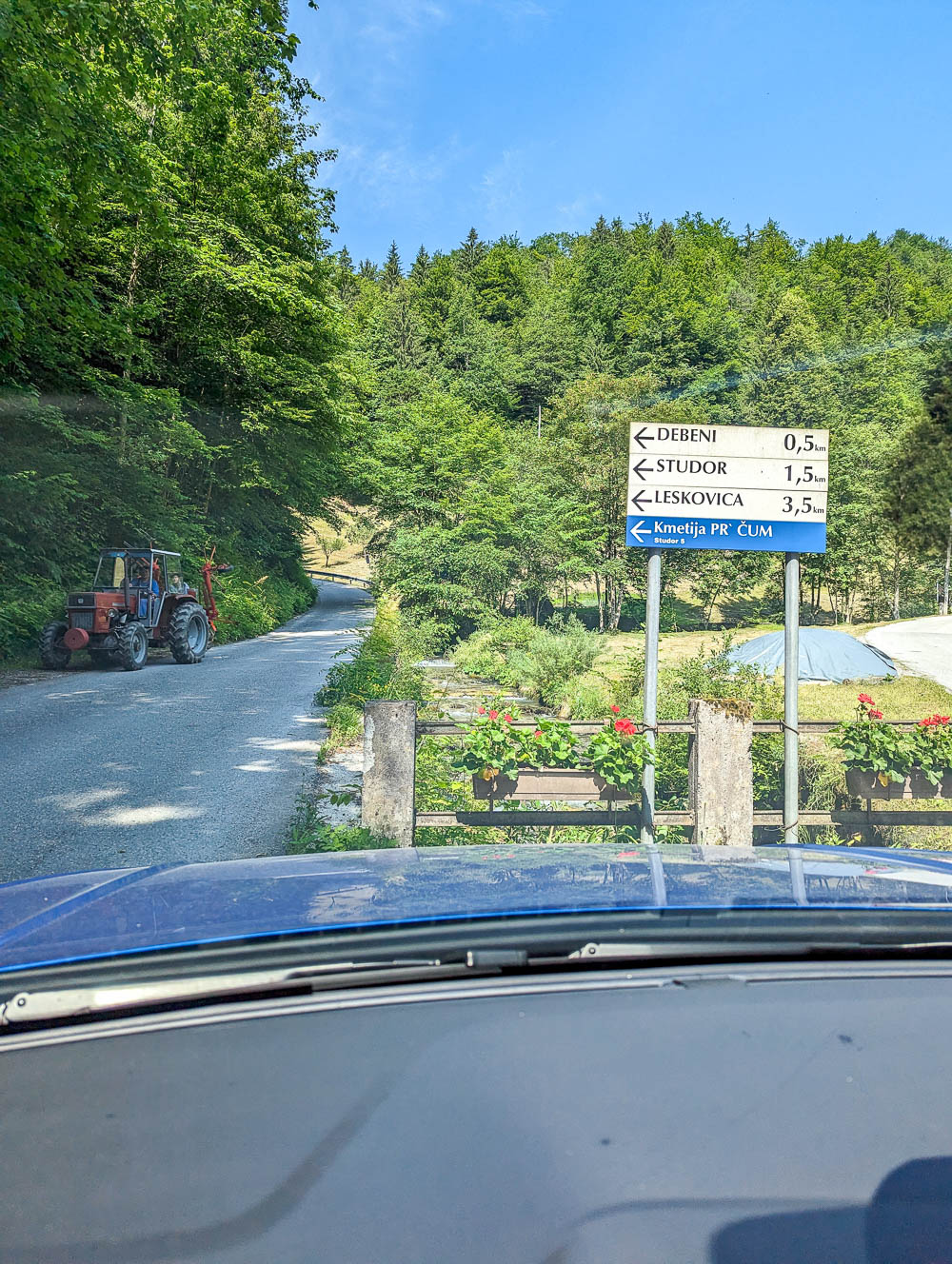
13. Parking is sometimes an issue
For the most part when driving in Slovenia, you’ll be able to park your car at your hotel without issue—especially in bigger, more popular cities like Ljubljana and Lake Bled. But there will be a few times when you need to take note of the special parking instructions.
In Piran—Slovenia’s coastal gem—there’s no parking allowed at all within the city. Instead, you must park at one of the parking garages on the outskirts and take the free shuttle into town. Your hotel will be able to give you all the instructions you need for this and may even include parking in your hotel payment. (I stayed at Hotel Zala and they were super accommodating with parking.)
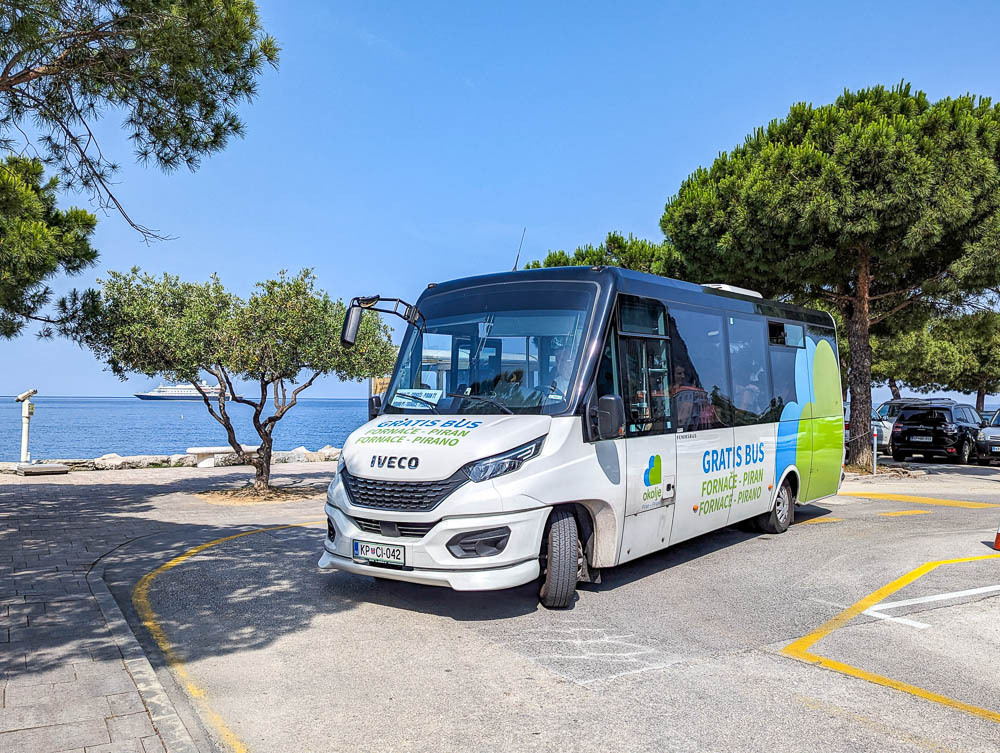
In Maribor, we stayed at Hotel Orel which is smack in the center of the city, in the pedestrian-only zone. To park here, we had to prearrange it with the hotel who gave us special instructions on how to get past the hydraulic bollards. (You would die at my search history as I tried desperately to figure out what those things are called.)
I gotta admit, it was cool getting to open the bollards, but absolutely terrifying driving my car through the center of town where there are no distinct streets but plenty of pedestrians (and giant ice cream cones and other things you find on a pedestrian-only street) to dodge.
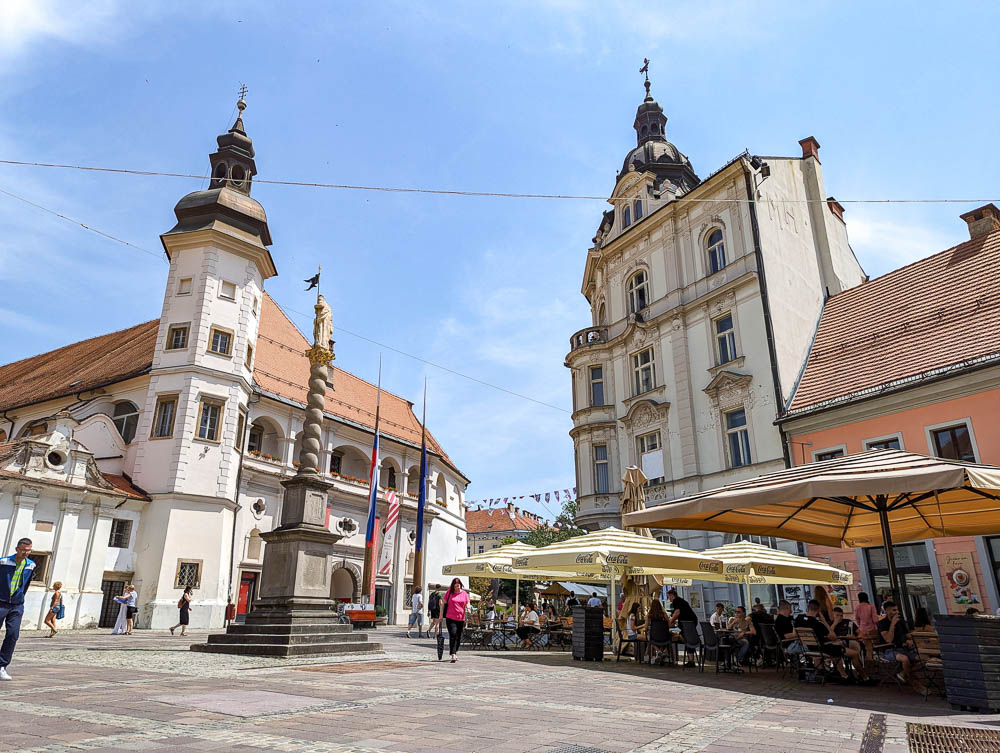
Before you start driving in Slovenia, be sure to confirm with all of your hotels what the parking situation is beforehand. Otherwise, you can also check the reviews for each of your hotels on Booking.com and filter for ‘parking’ to see what others have experienced.
14. Green is regular, diesel is black
Here in the US, our gas pumps use a green pump for diesel gas and black pumps for regular gas. In Slovenia, it’s the opposite—green for regular gas and black for diesel. The pumps say this when you’re there, but just keep this in mind so you don’t absent-mindedly put in the wrong stuff.
The lady at the rental car desk who knew it was backwards from what we’re used to warned us about this, and I was still sweating as I picked up the pumps, checking about 10 times that I was putting the right gas in our car.
Fun Slovenia gas fact: The price of gas in Slovenia is controlled by the state and therefore is the same everywhere, at all the gas stations.
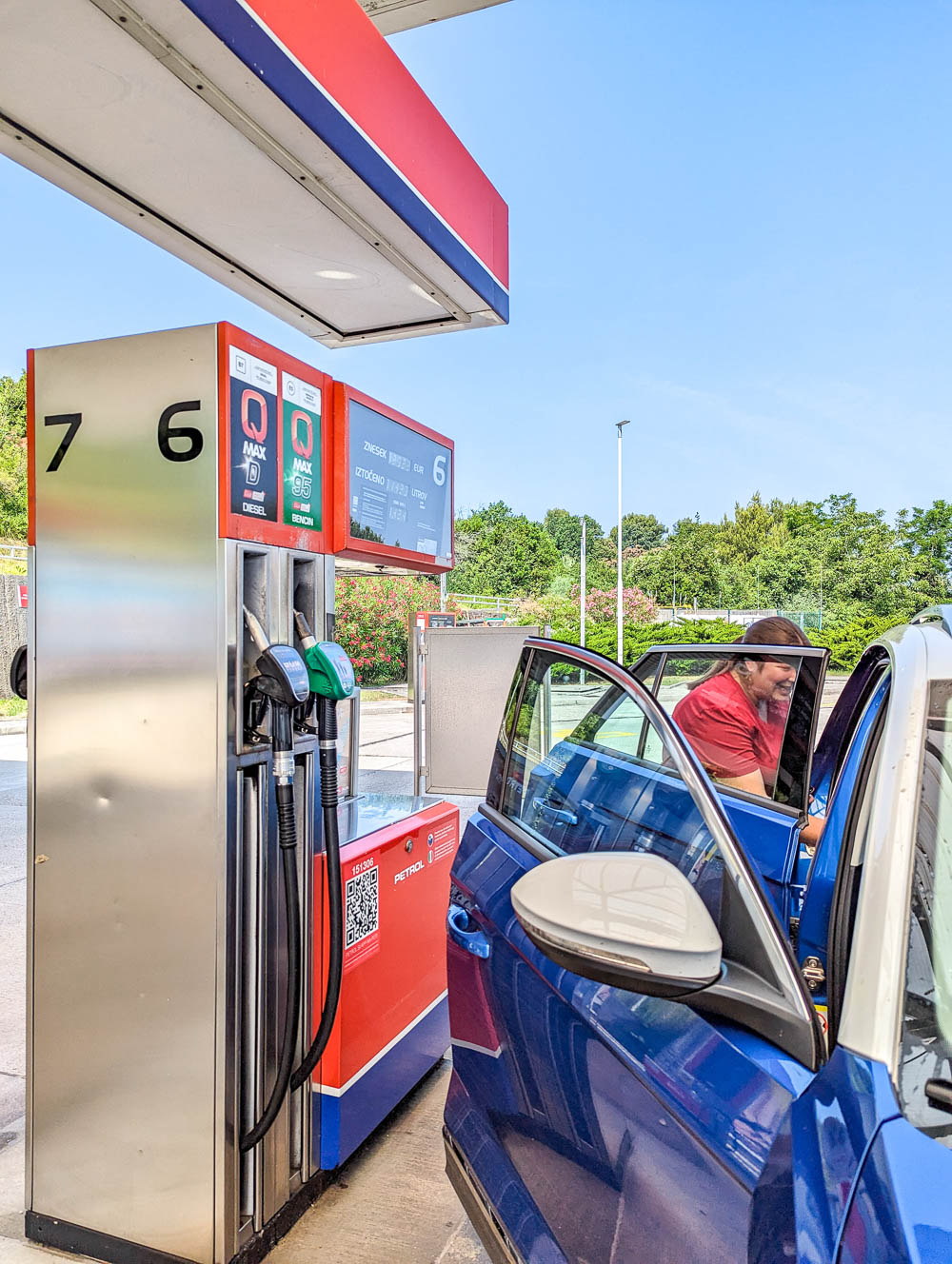
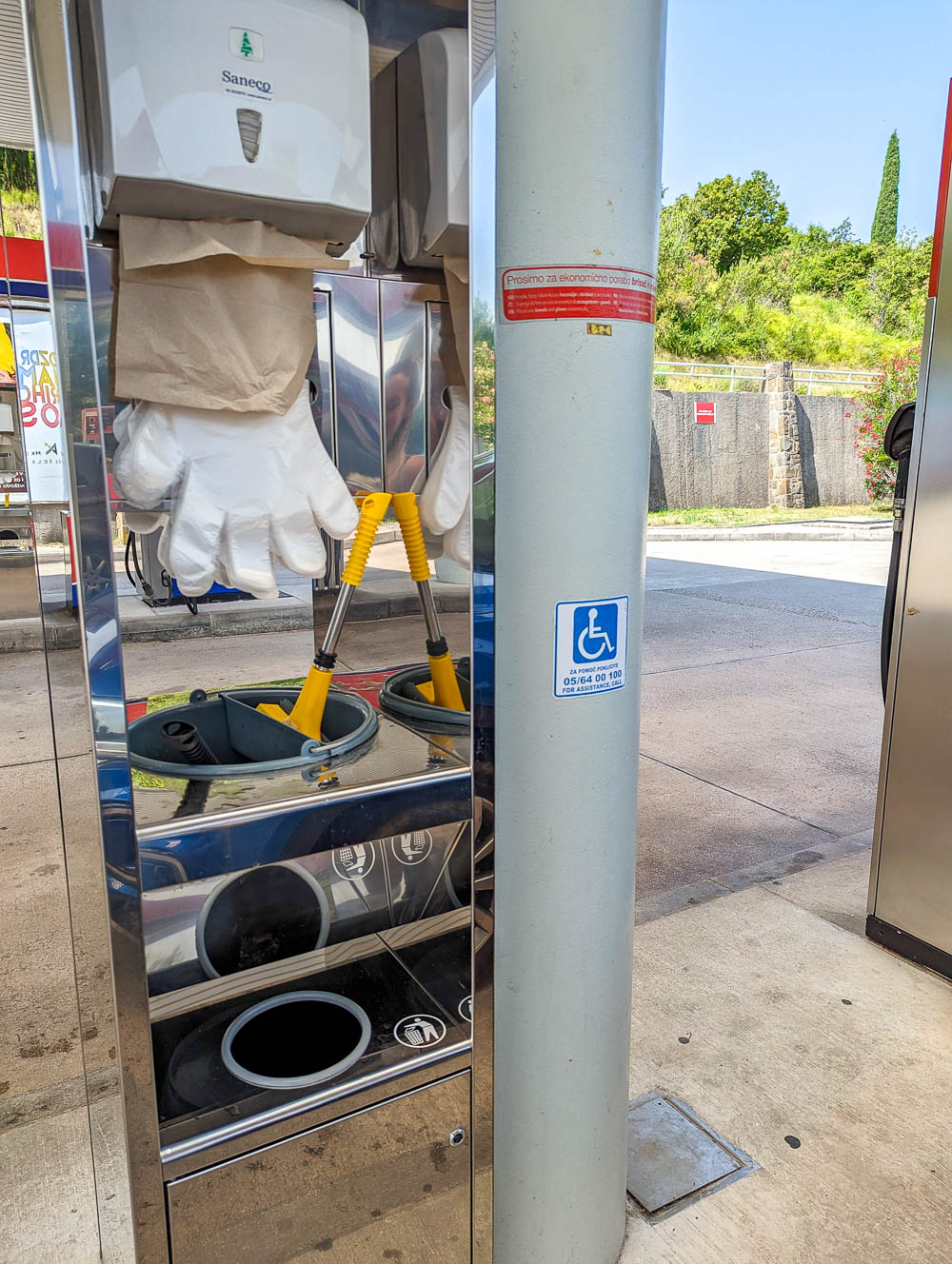
15. Be prepared for rotaries
There are so many rotaries in Slovenia, and I am here for it. Here in Massachusetts we use rotaries a lot too and I really wish there were more of them… just in general, everywhere. Luckily, Slovenia has more than embraced the roundabout concept.
If you’re from a place without rotaries, watch this quick video (or this more in-depth one) so you can learn what you need to do. Basically, you (person entering the rotary) always yields to the people in the rotary. Jump in when there’s room and then jump out when you get to the street you want to turn down.
Some of the rotaries here are huge and some are incredibly small. Most of Slovenia’s rotaries have some kind of statuary or art installation in the center, but some don’t have anything at all. Even I, rotary veteran, drove straight over one because it was tiny and had nothing in the center. I did this twice in the same rotary, on different days. Don’t be like me!
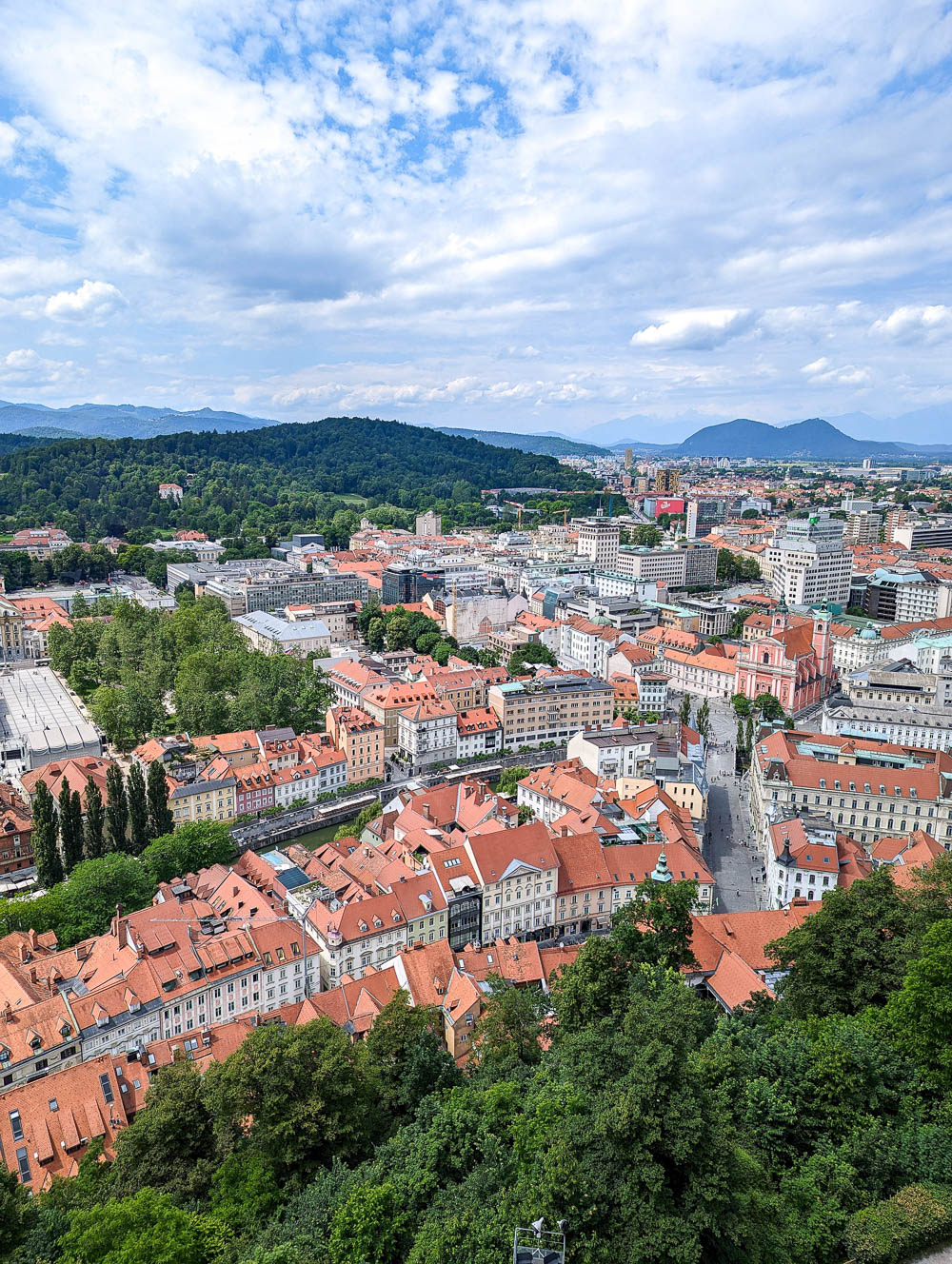
16. Familiarize yourself with Slovenia’s driving laws
Driving in Slovenia is pretty straightforward. The rules and driving customs are pretty much the same as driving anywhere else in Europe or the US. The roads are well-maintained and most of the signage is self-explanatory. There’s nothing too weird you need to be wary of.
That being said, there are a few specific things you should know like:
- Drivers must have their (low) headlights on at all times, even during the day.
- It’s illegal to turn right on red.
- Sometimes there’s a stop sign at an intersection that already has stop lights. This is just in case the traffic light isn’t working. (They love signs omg.)
For all the other things you need to know about driving in Slovenia, check out the US Embassy page here. Want a glimpse into what driving in Slovenia is actually like? Check out this video of literally just 44 minutes of driving in Slovenia.
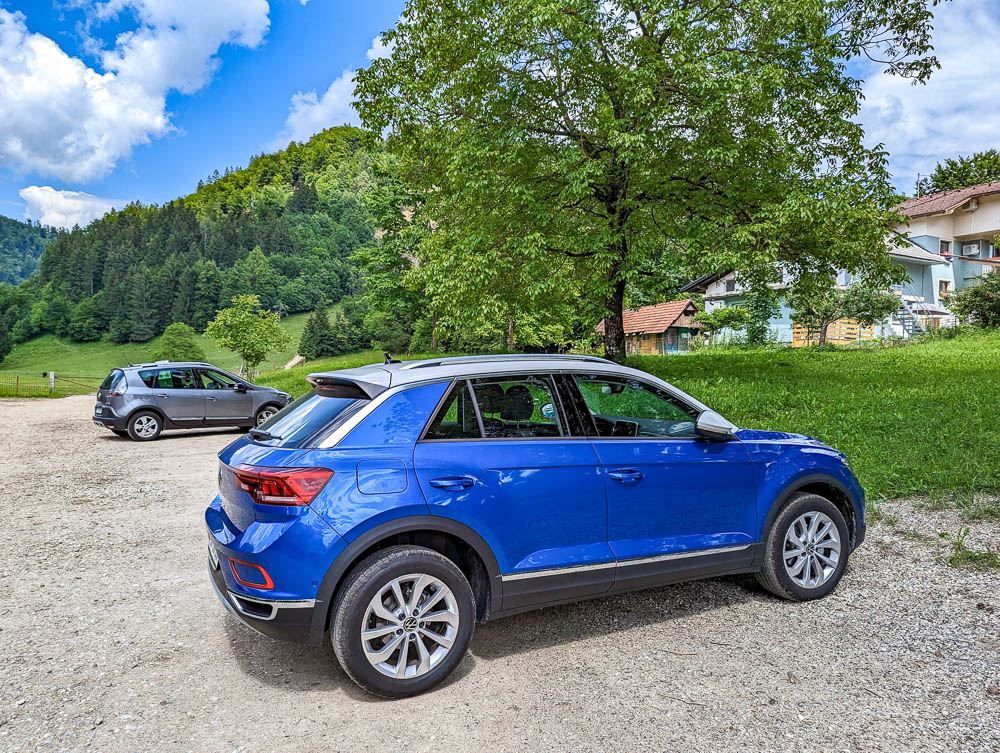
I hope I’ve been able to help you navigate this beautiful country! Like this post? Have more questions about driving in Slovenia? Leave a comment below and let me know. Have fun!

More resources for your time driving in Slovenia
- Hotels: Find great places to stay in Slovenia here on Booking.com. (Expedia and Hotels.com usually have some good deals too.) VRBO is best for rental properties.
- Rental car: Check out the best rental car deals in Slovenia here.
- Travel planning: Pick up a Slovenia guidebook for all your sightseeing needs.
- Culture: And this Slovenia Customs and Culture guide for all the other must-know info.
- Tours & Activities: Check out the best local tours and activities here on Viator and Get Your Guide.
- Want more? Check out all my Slovenia posts here.
Save this info, pin these images:
